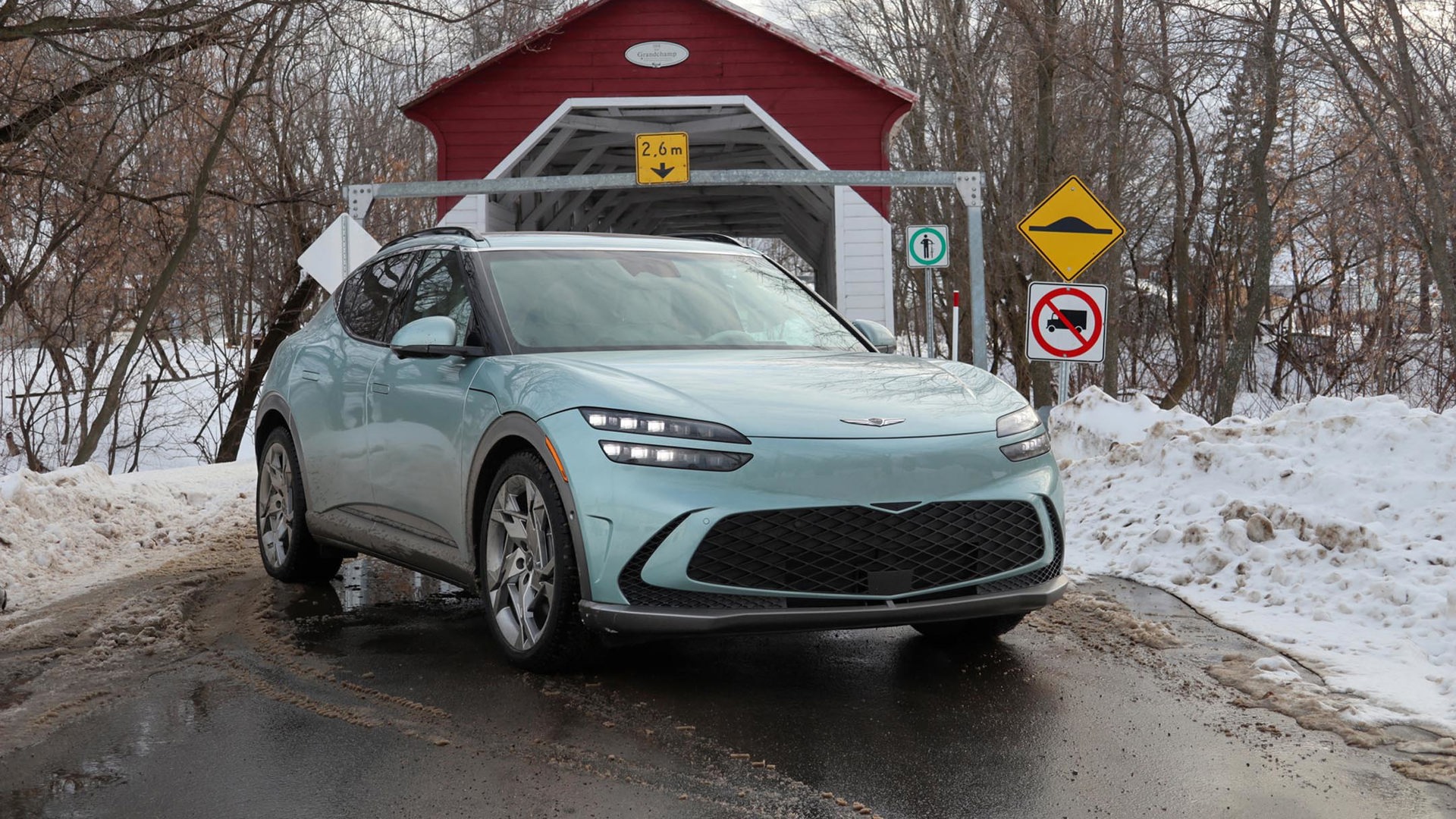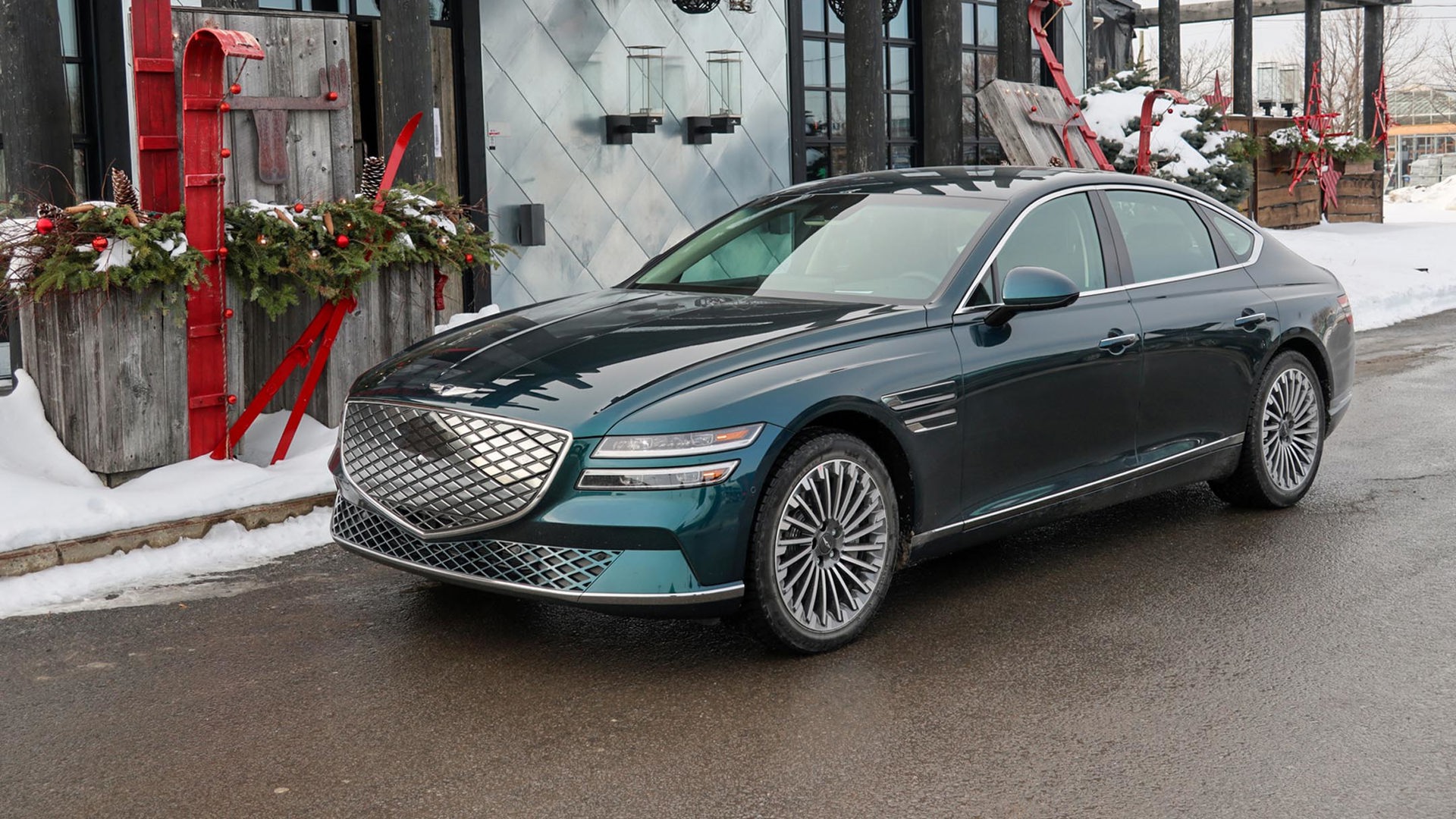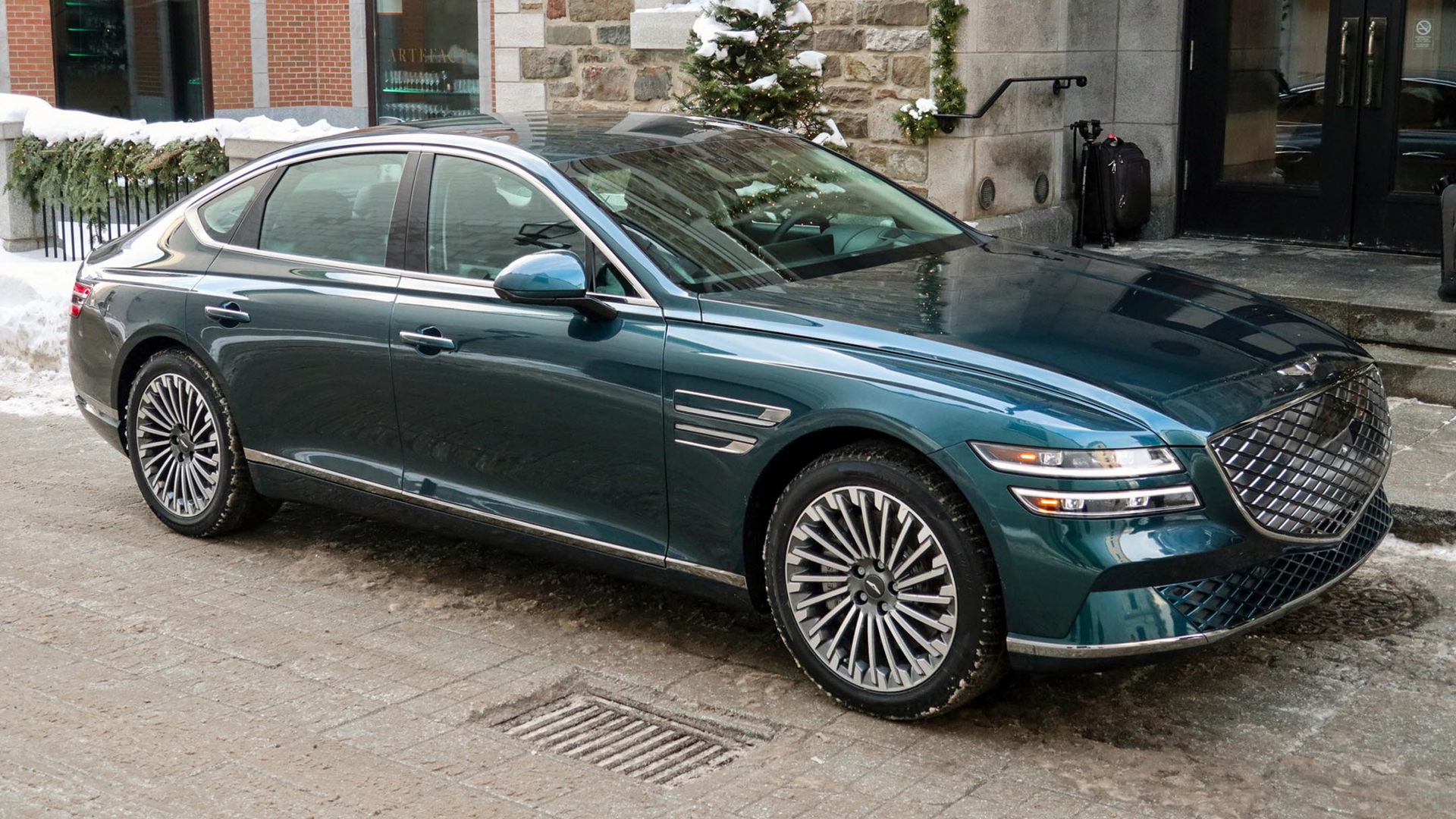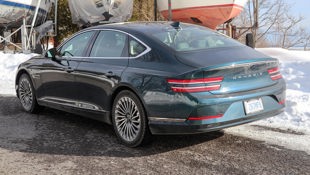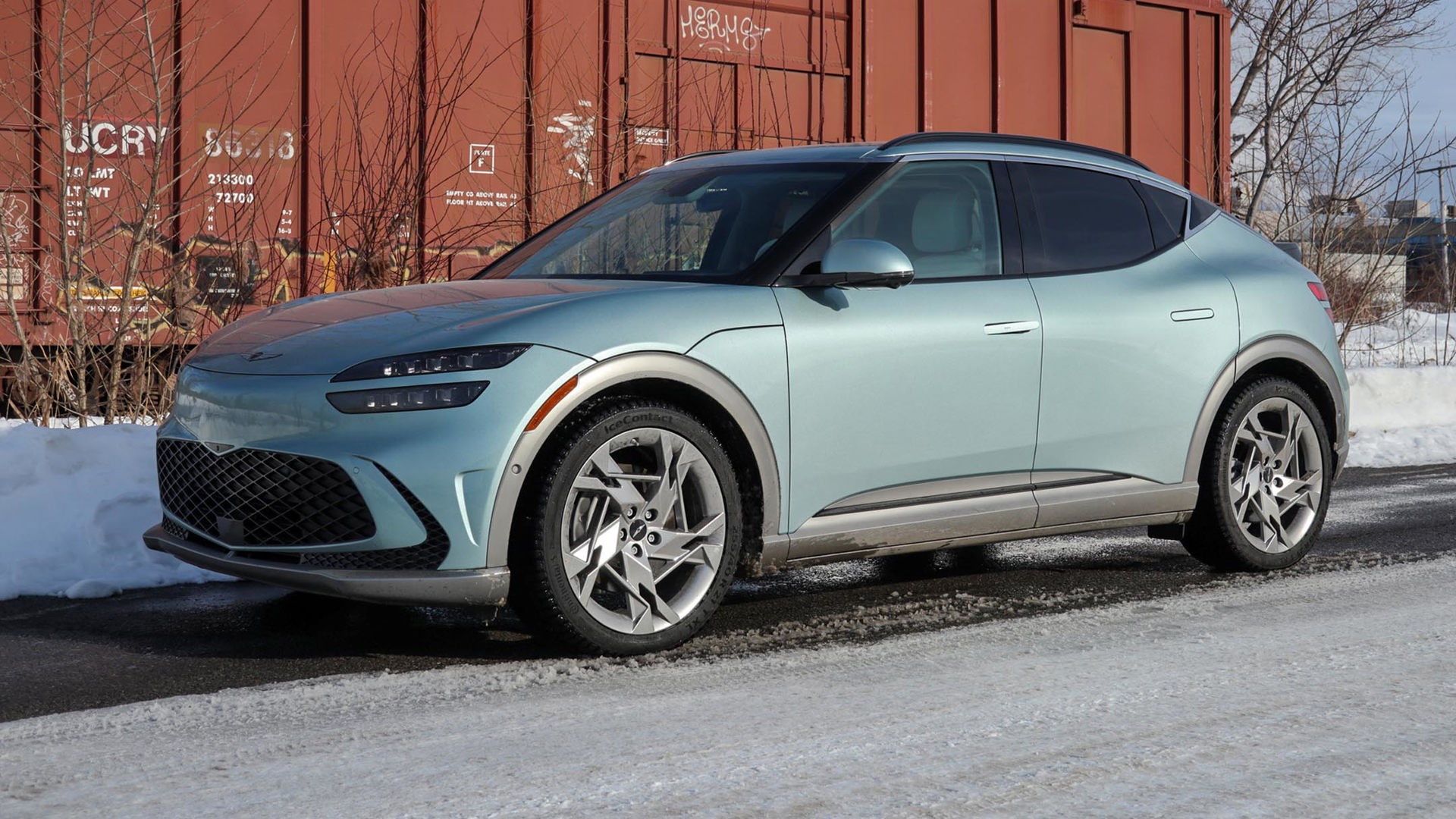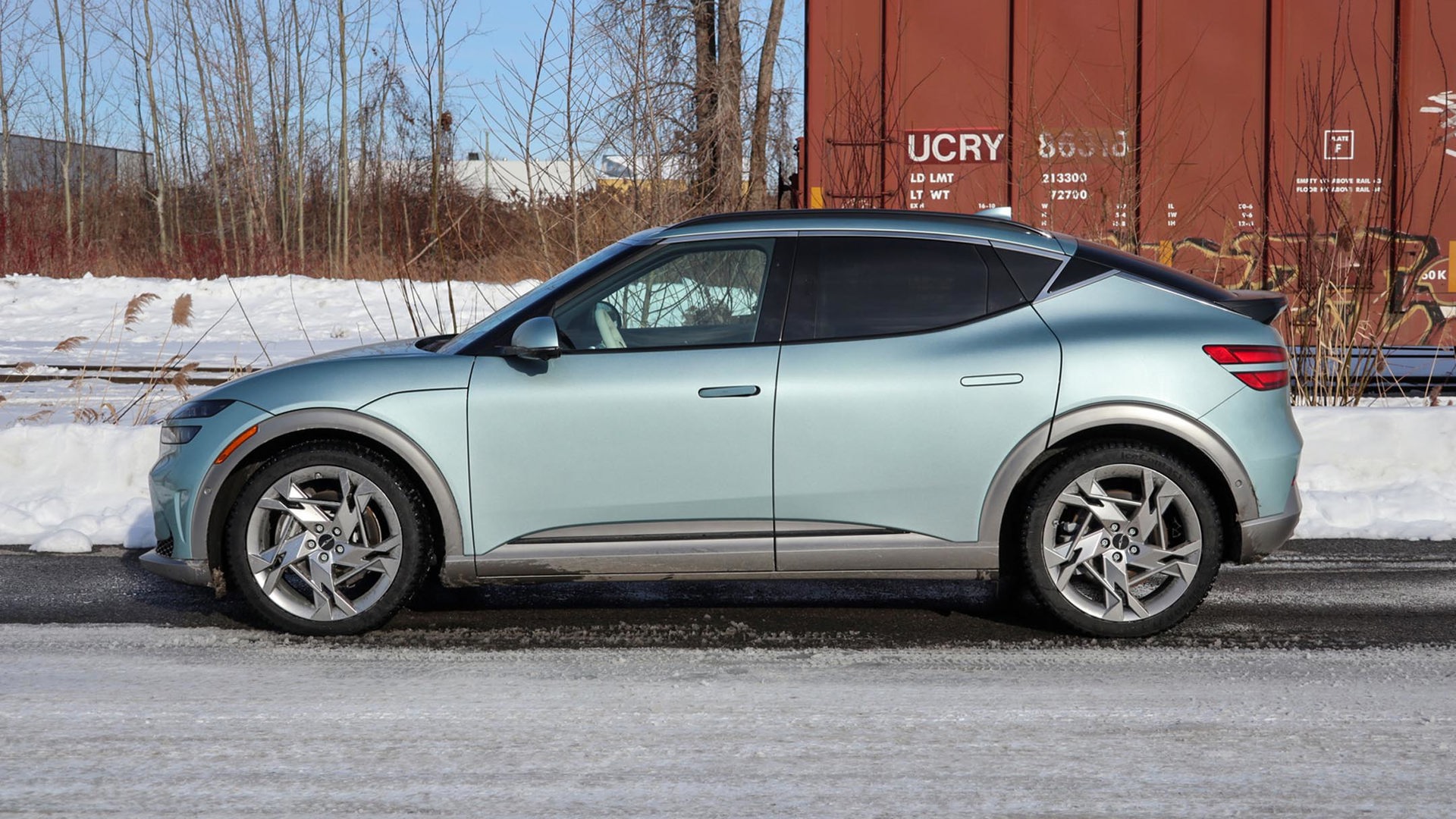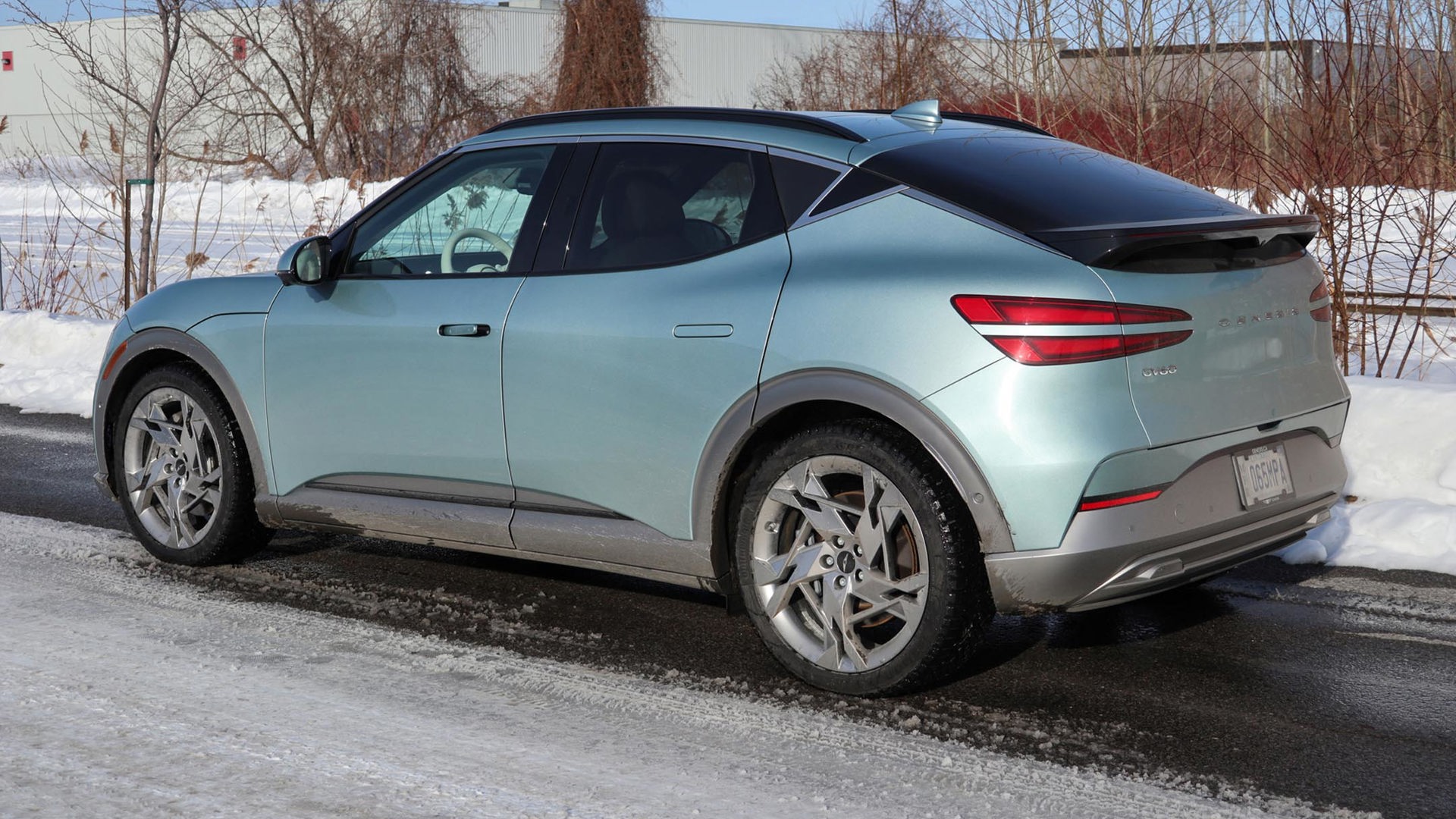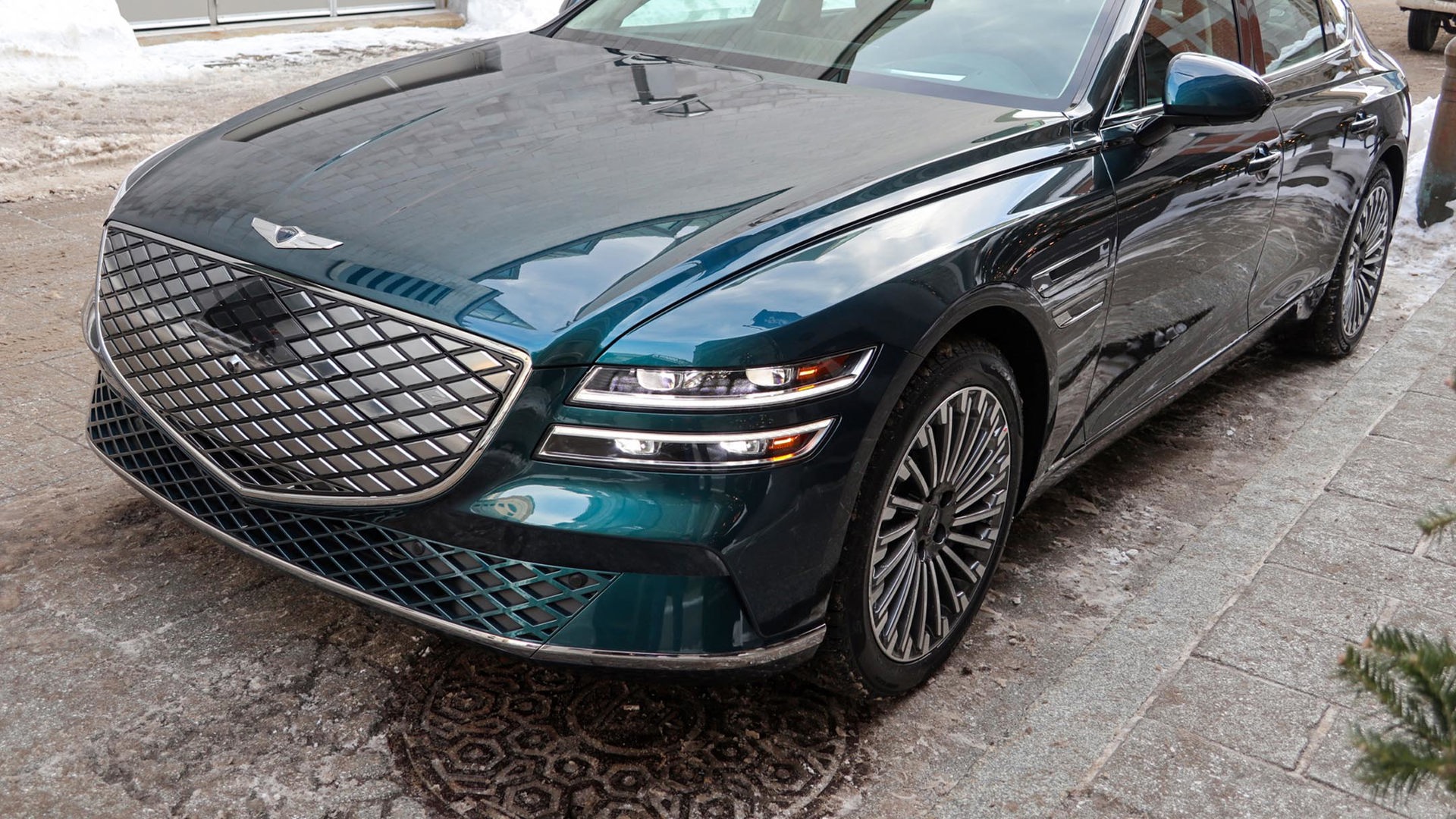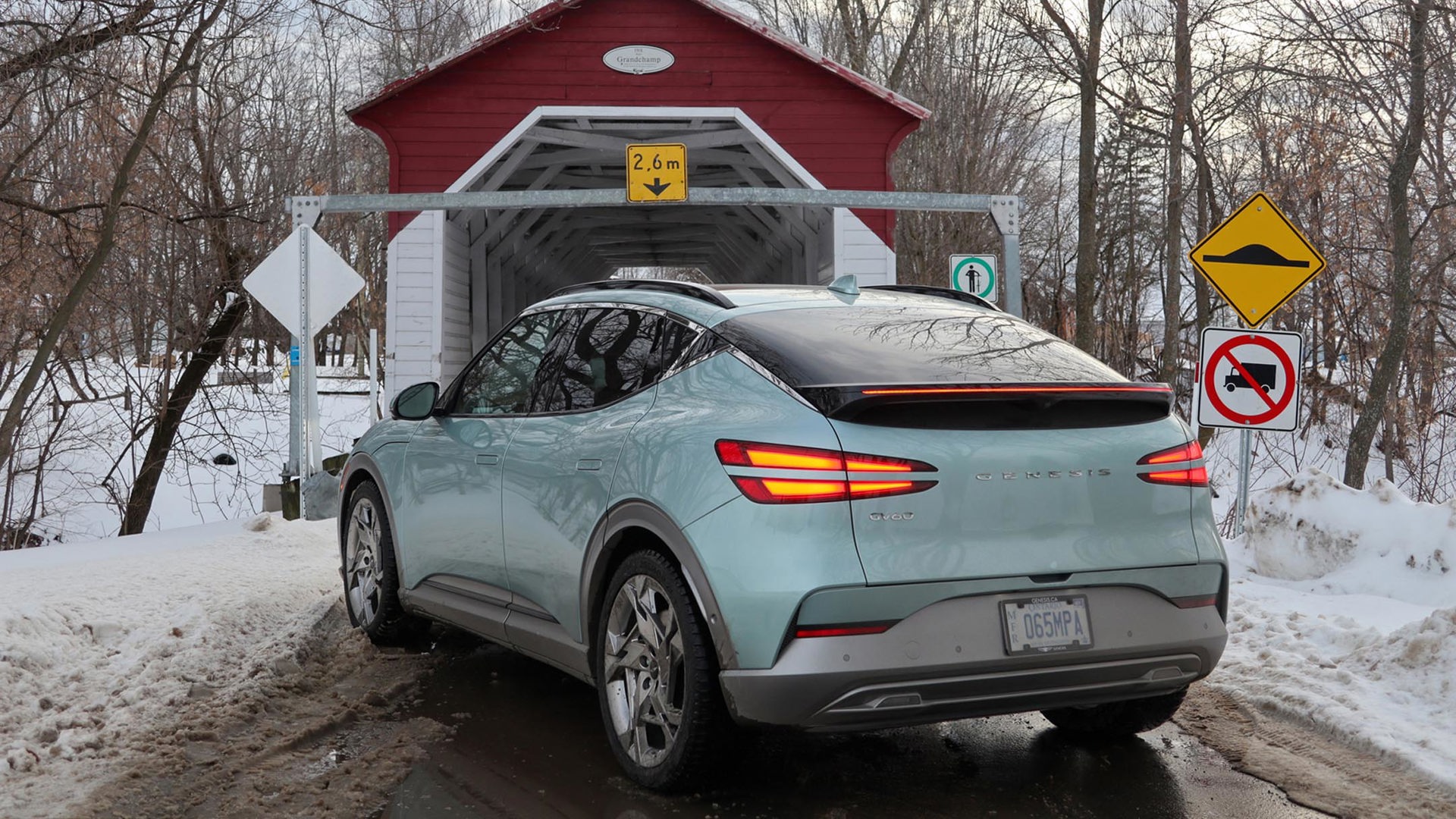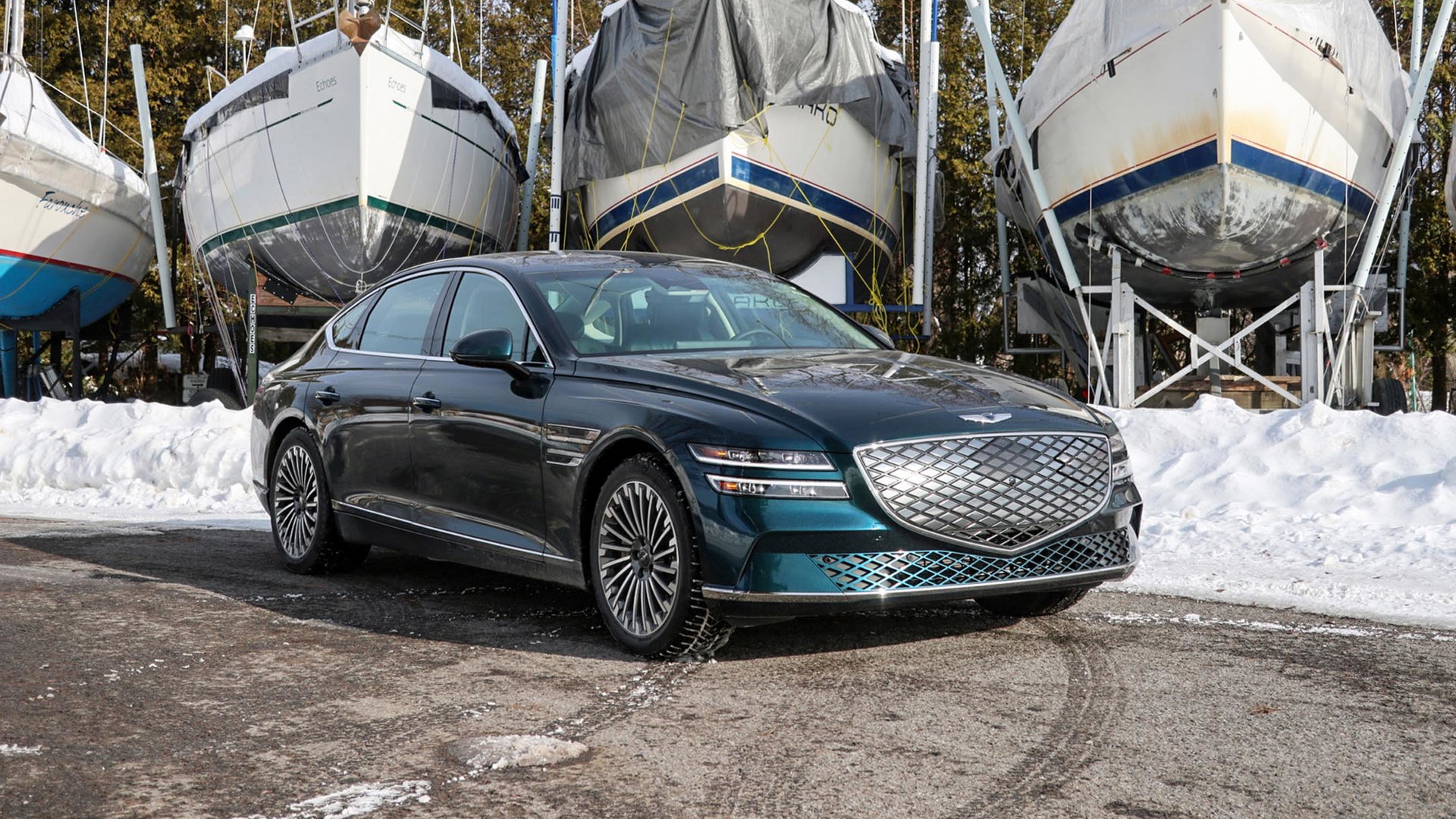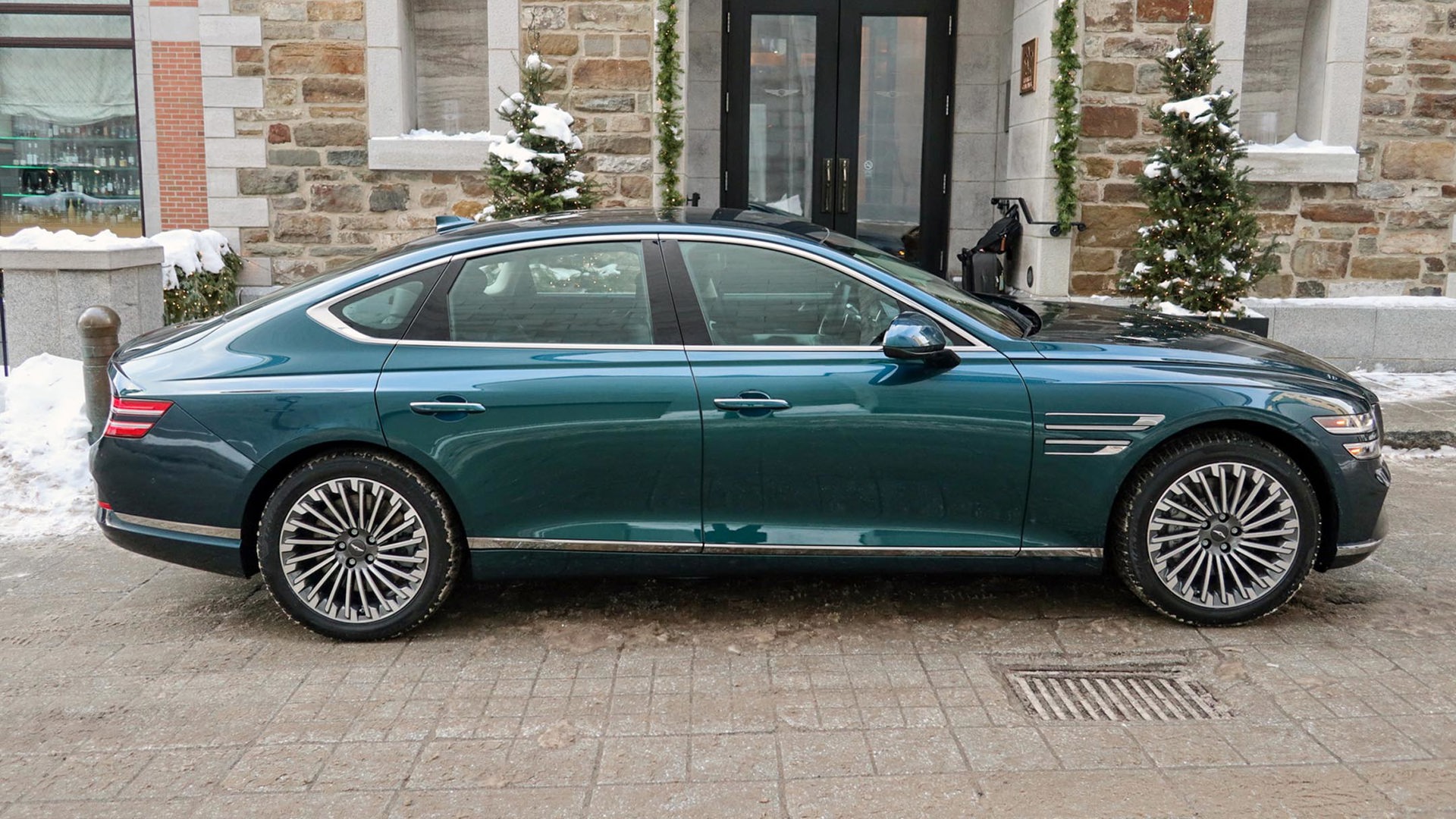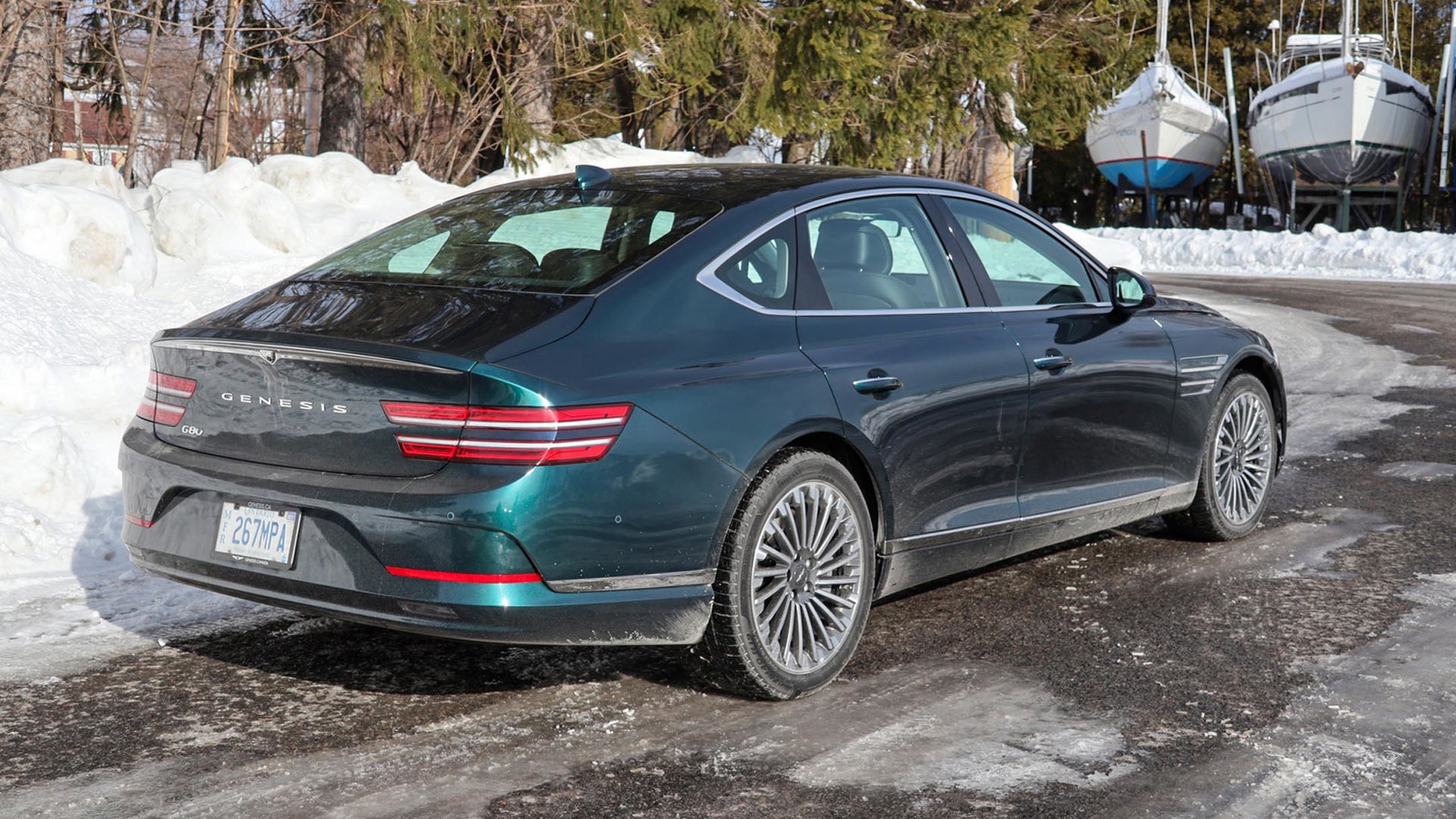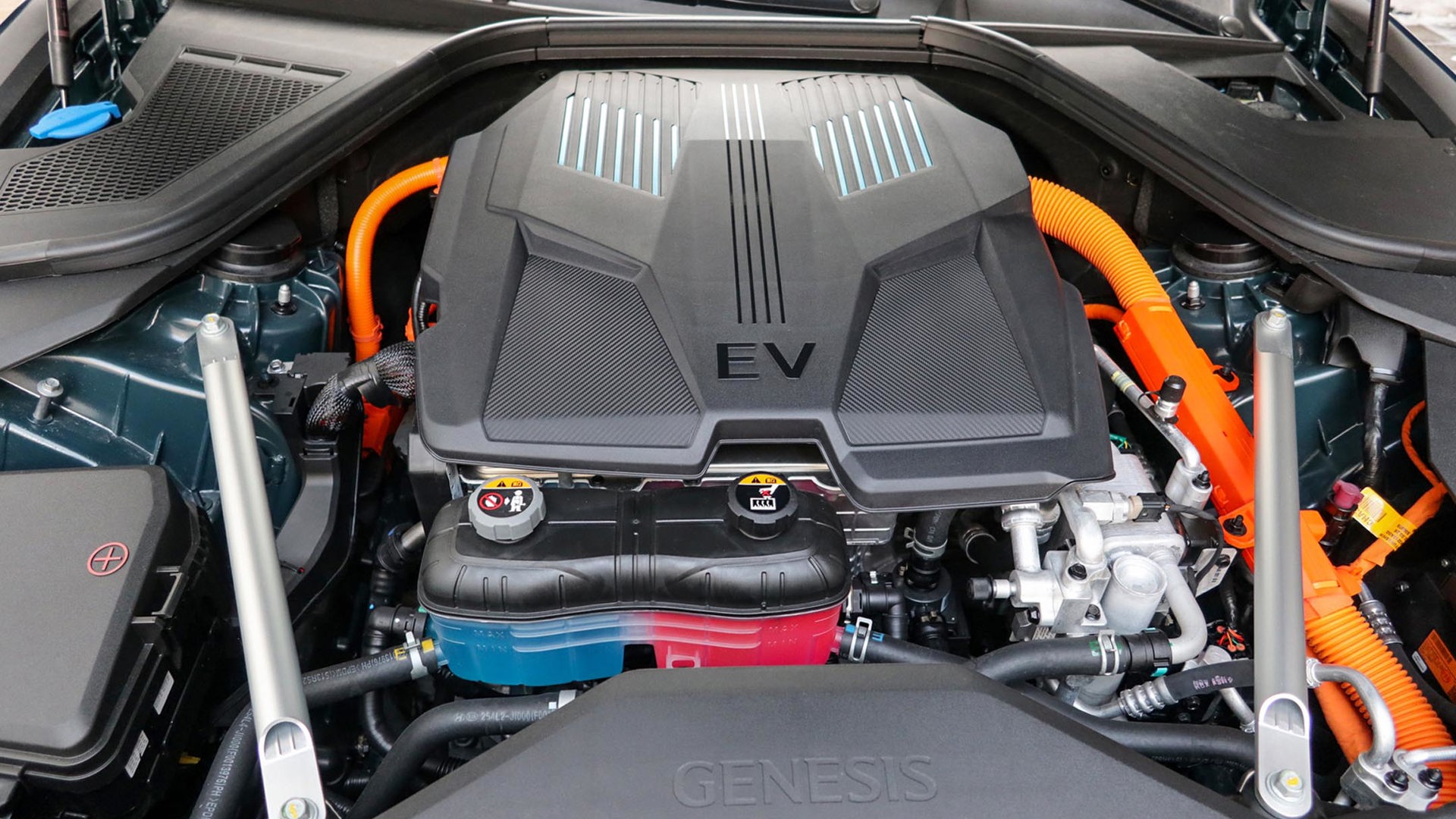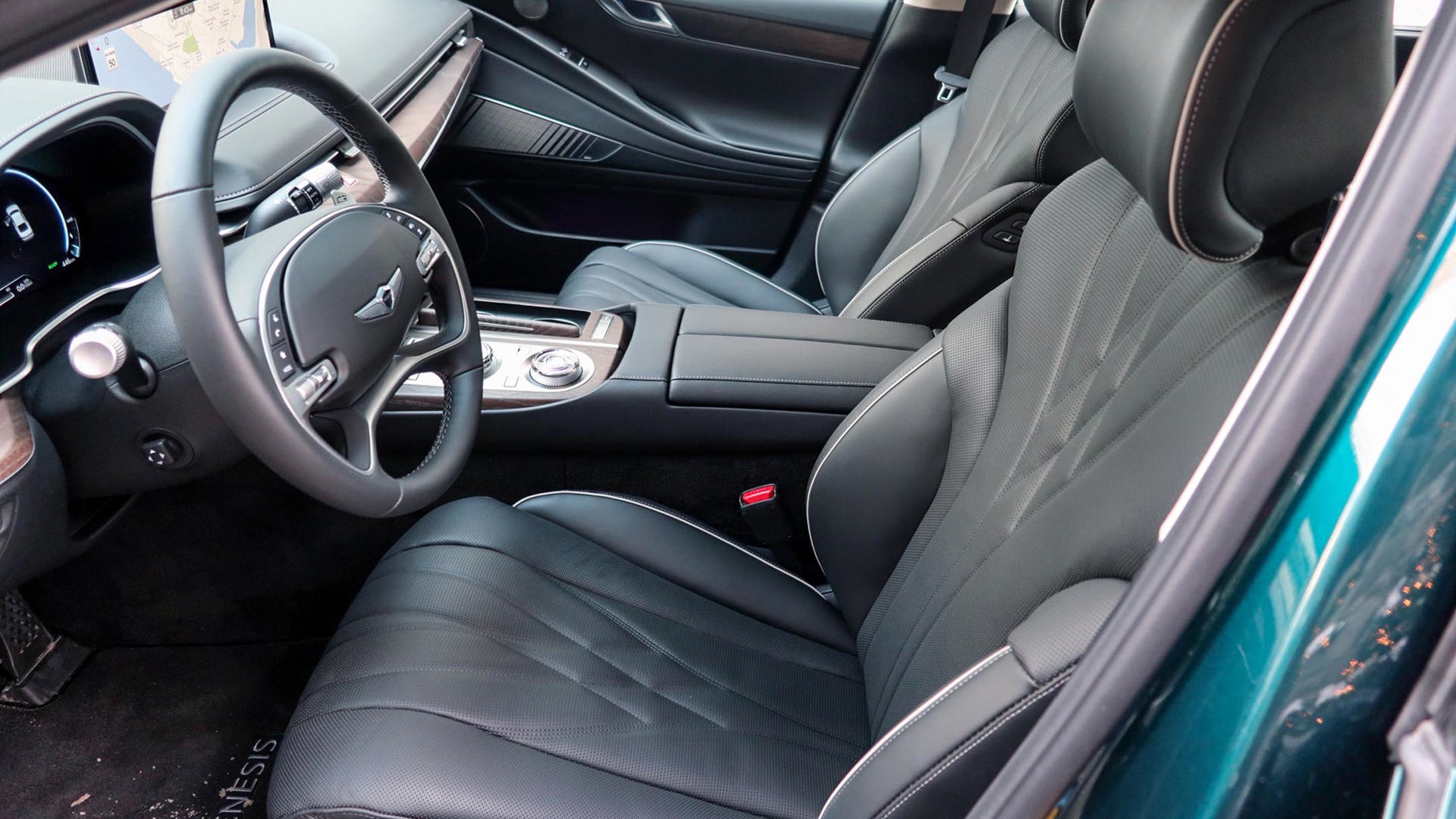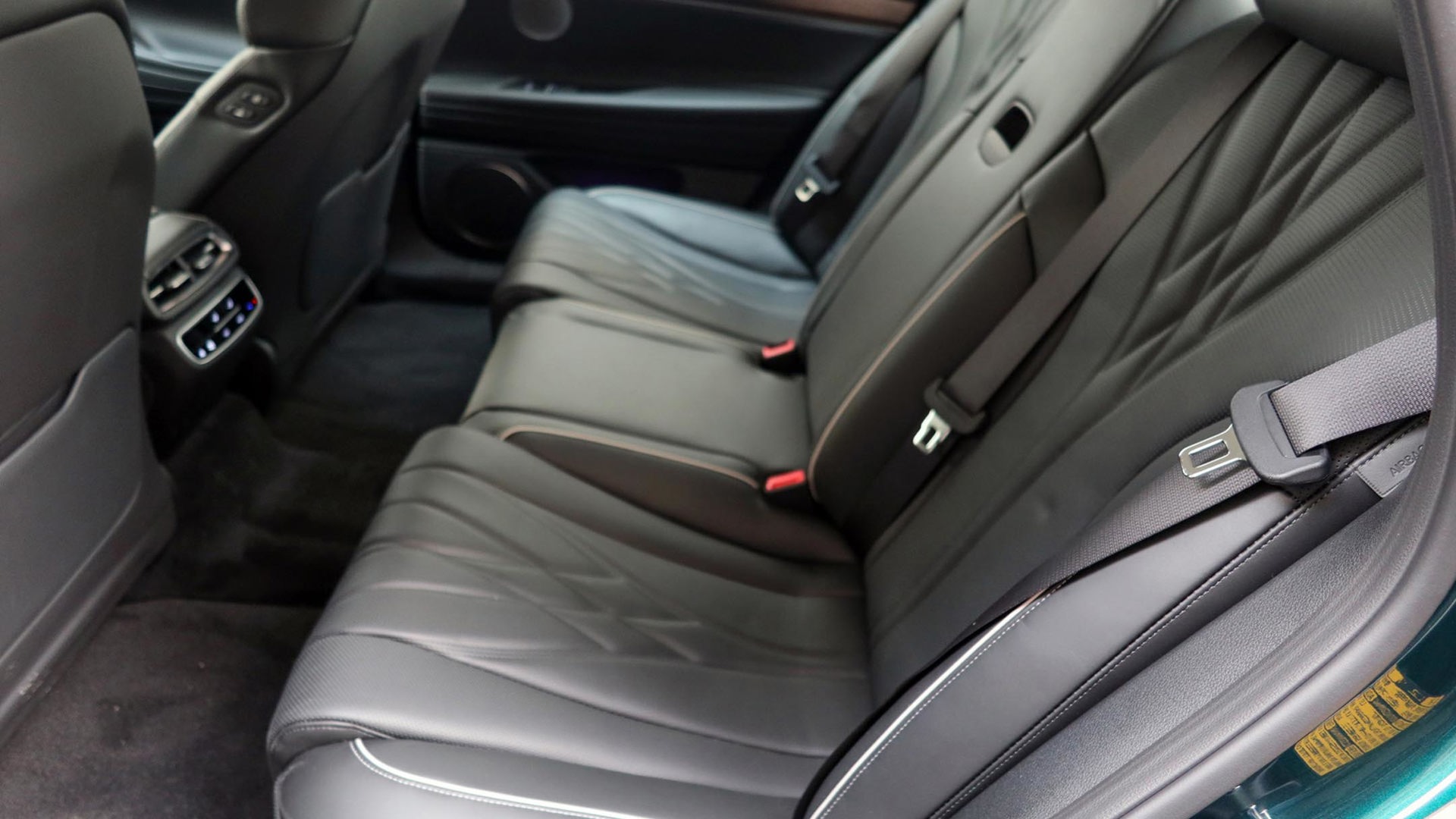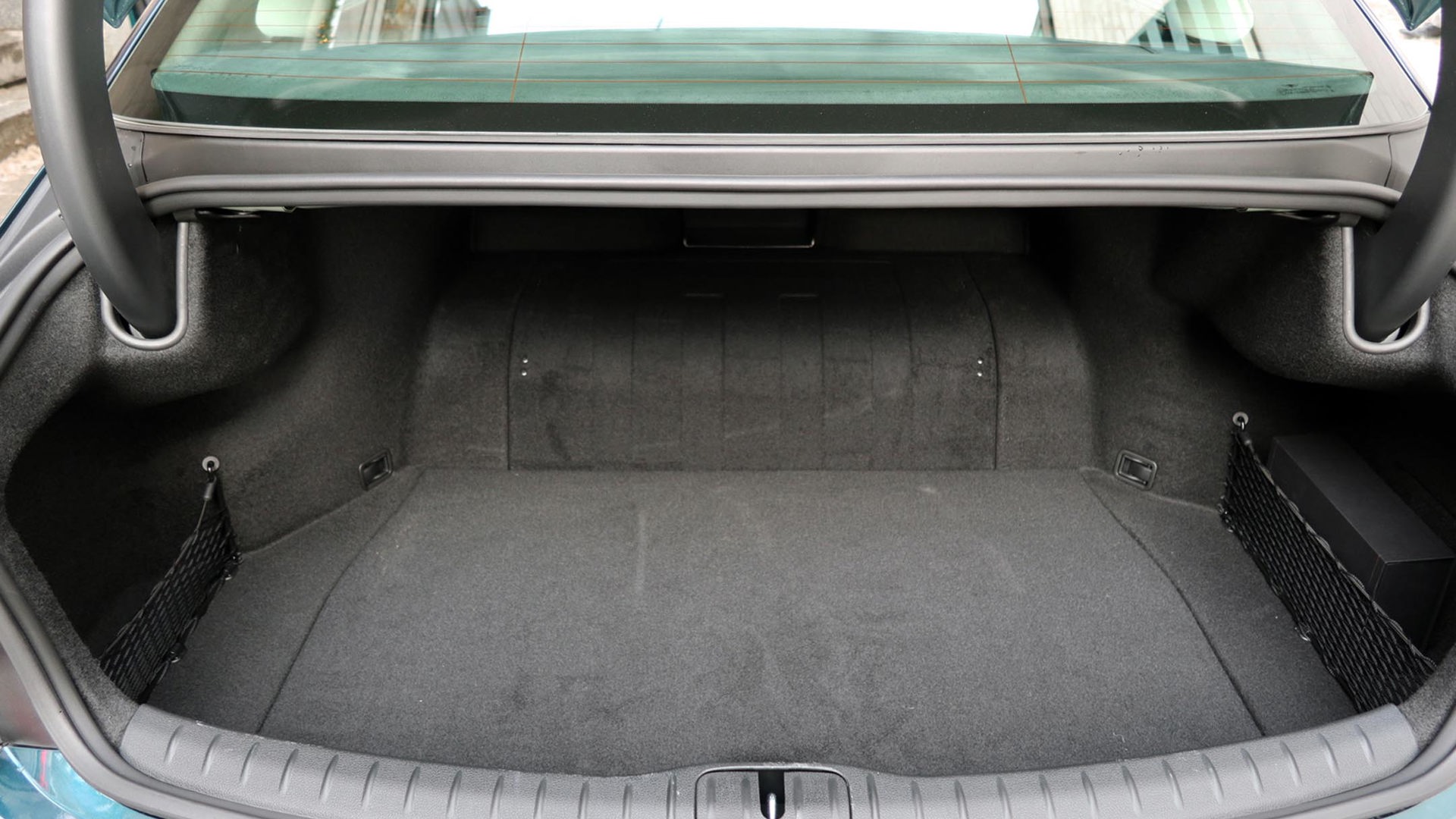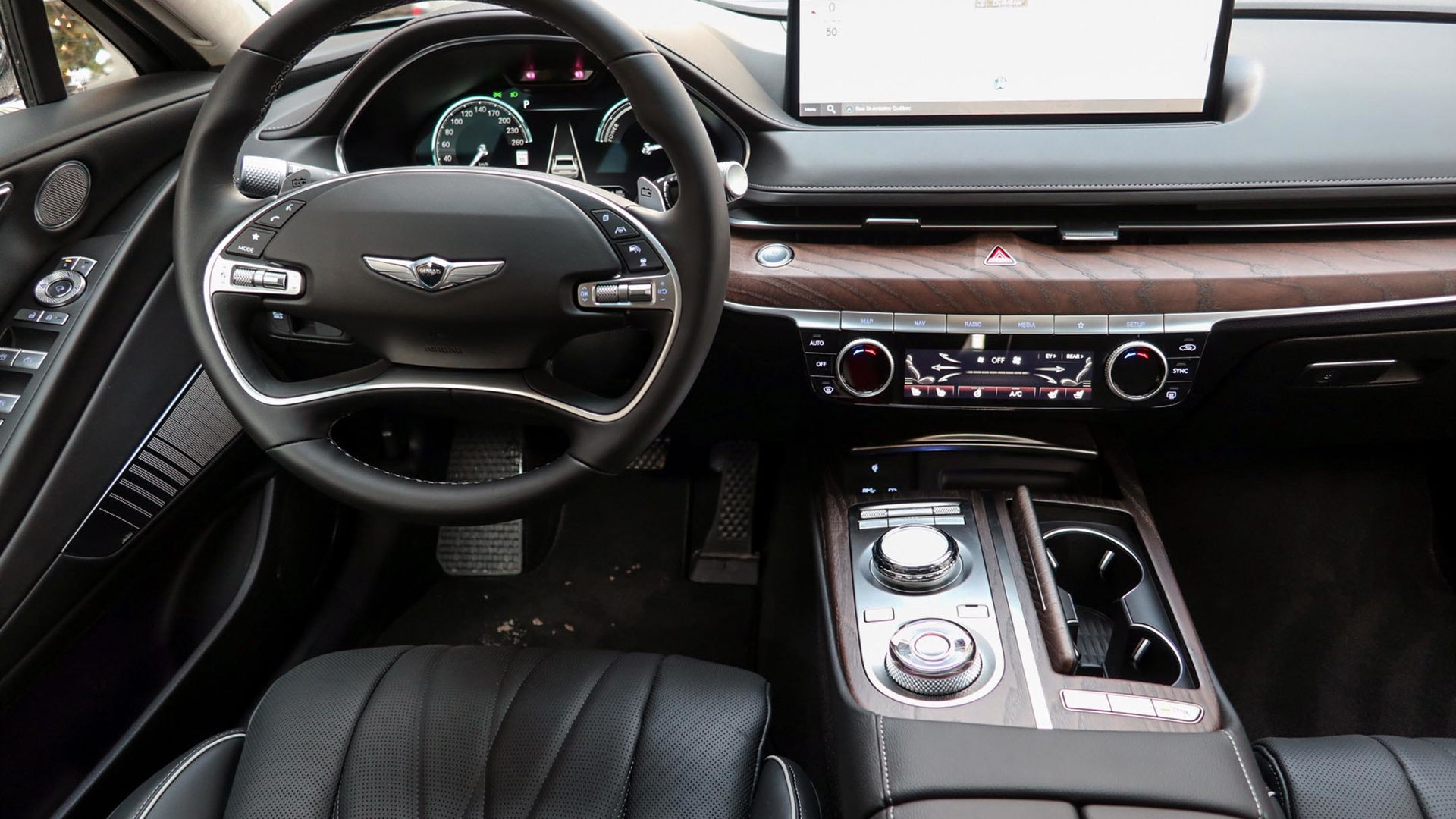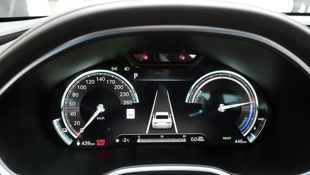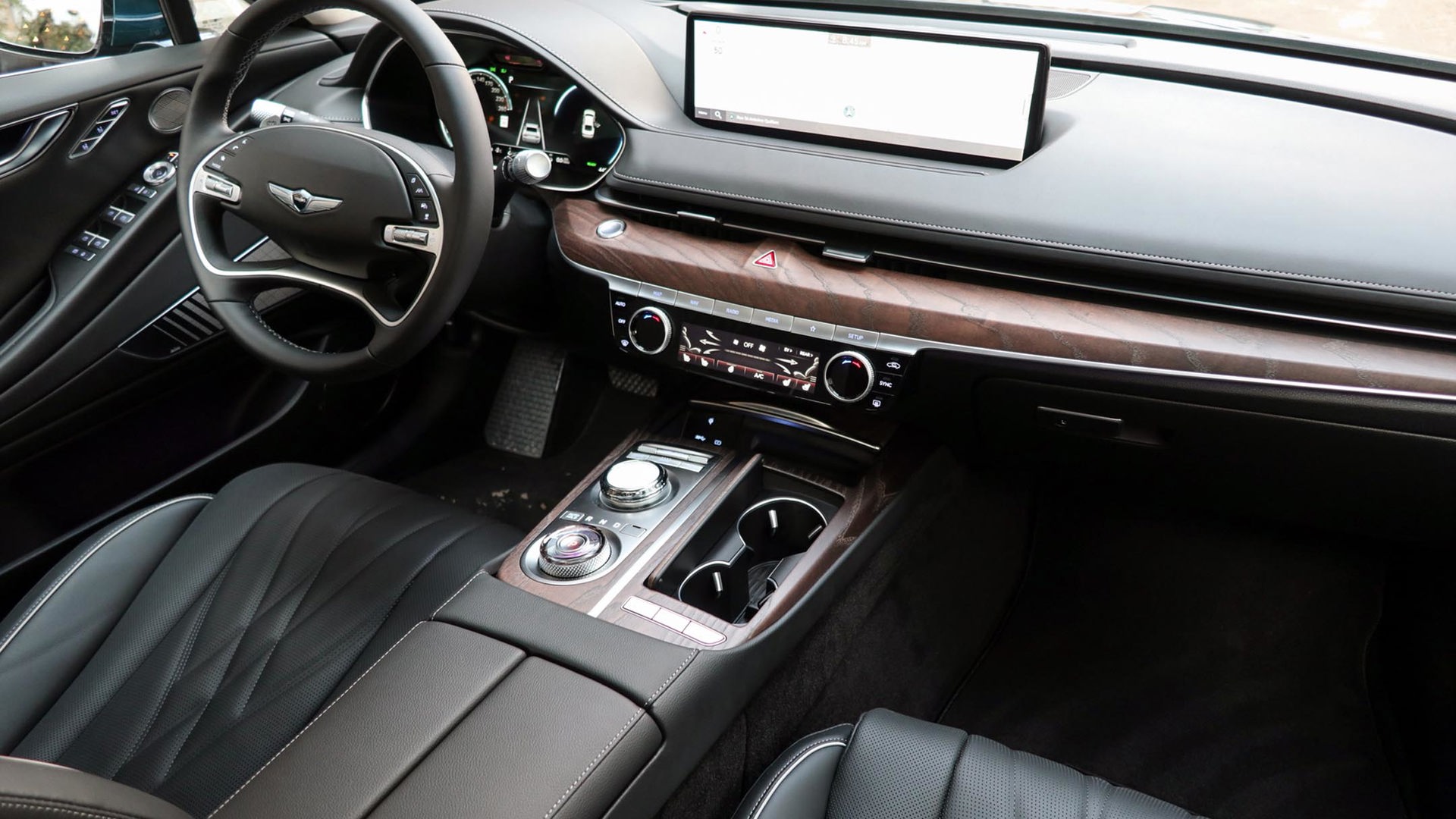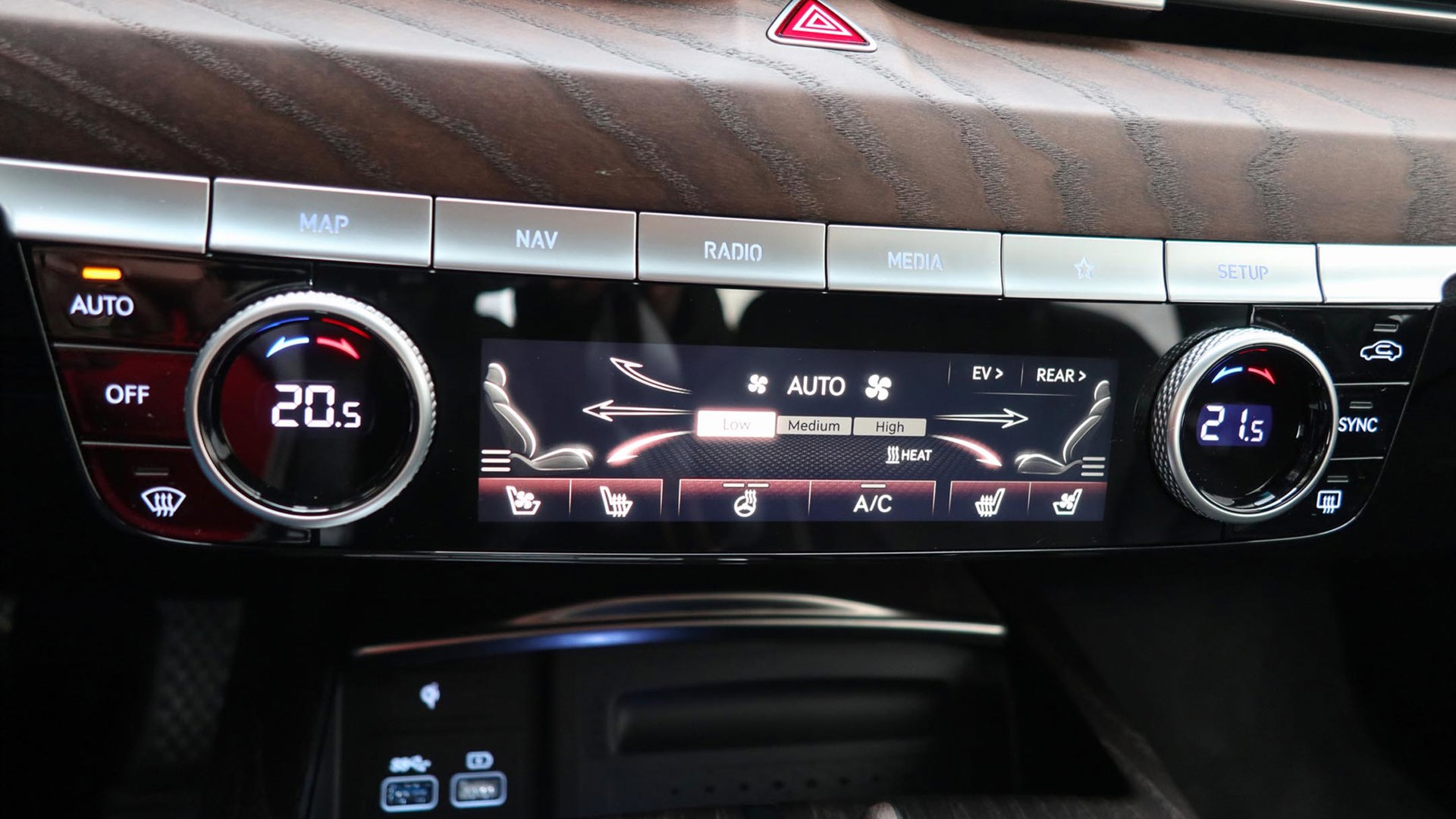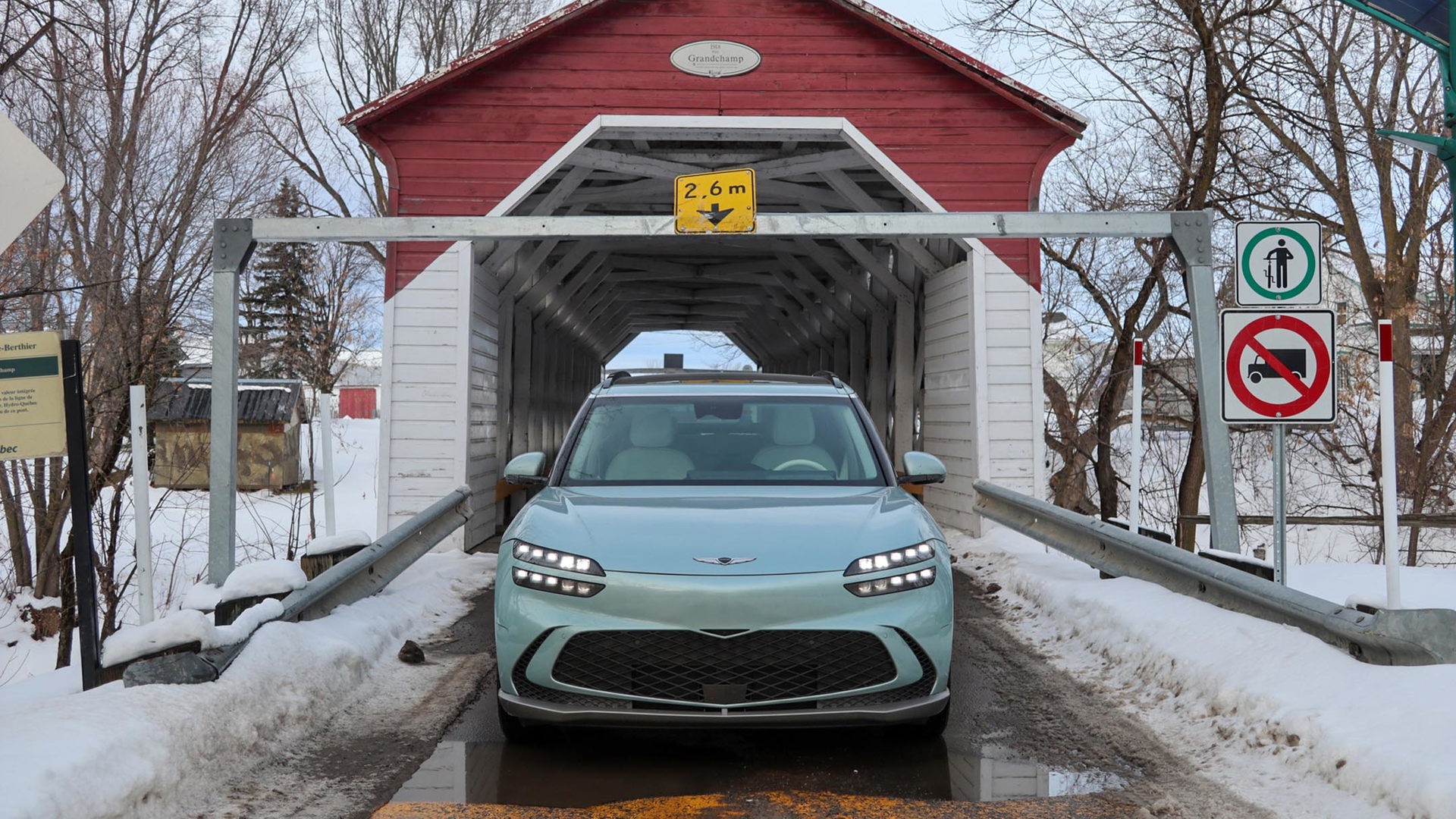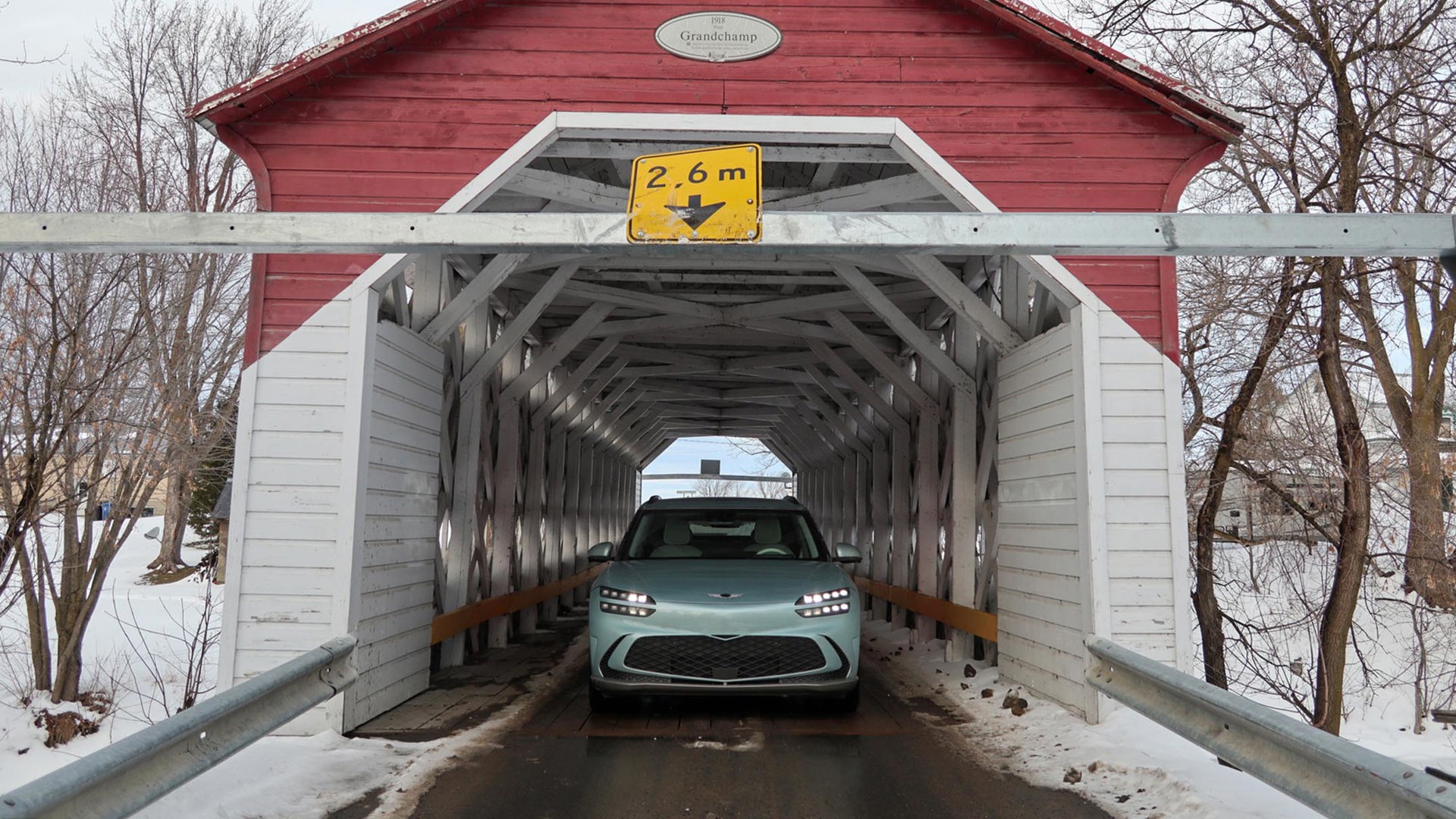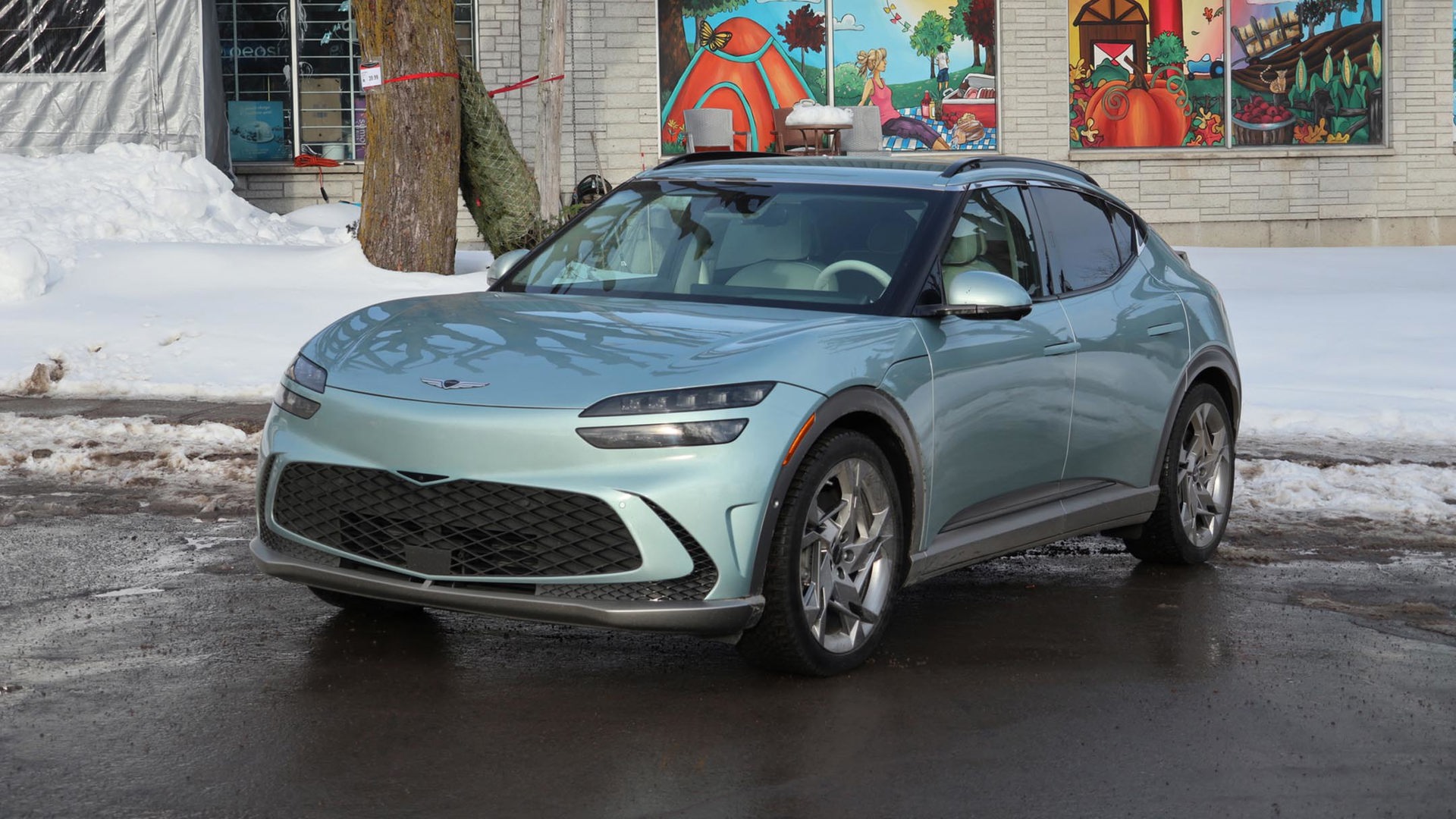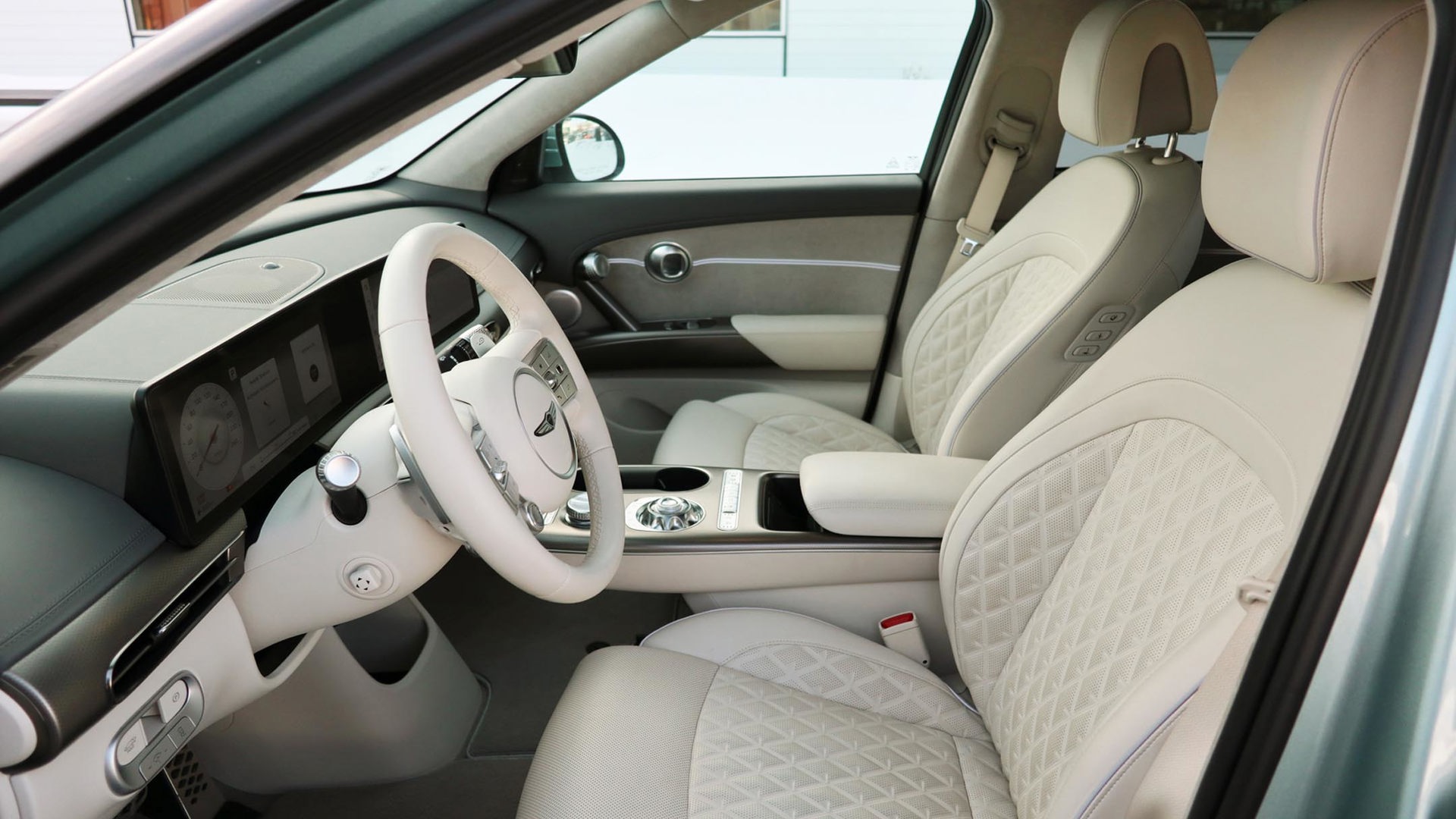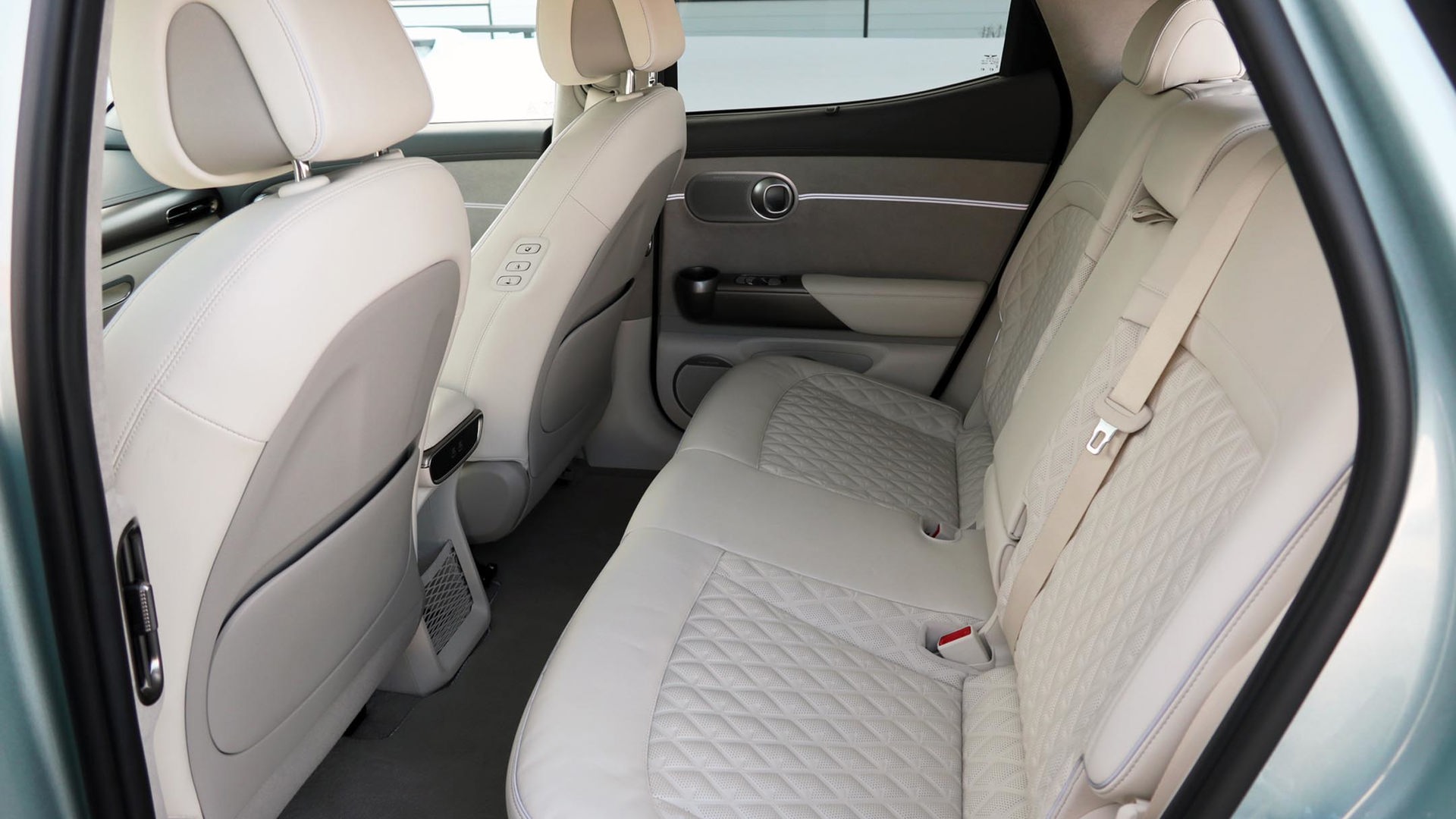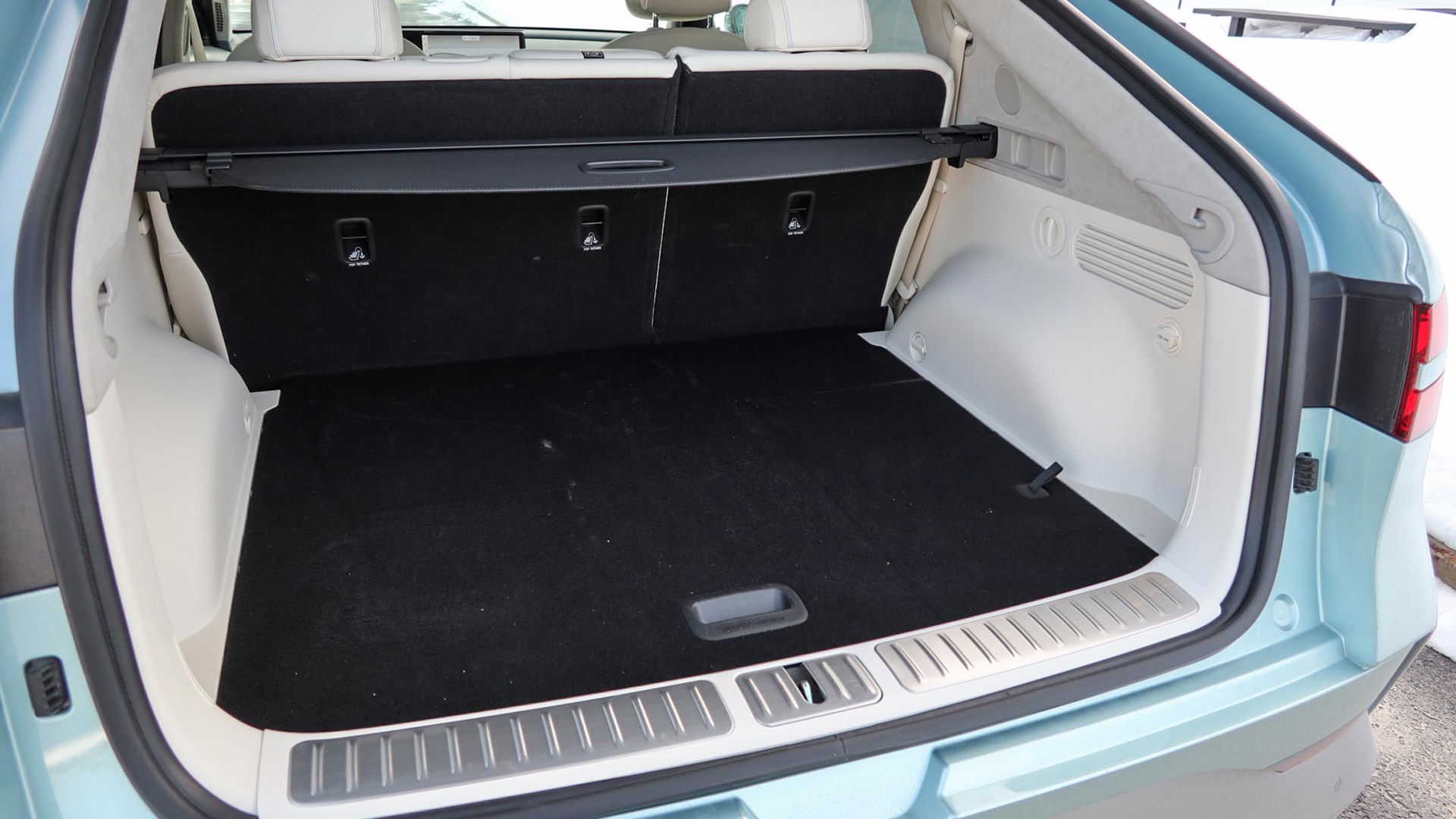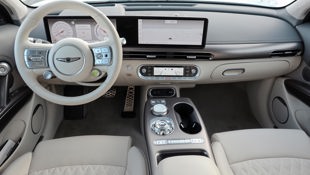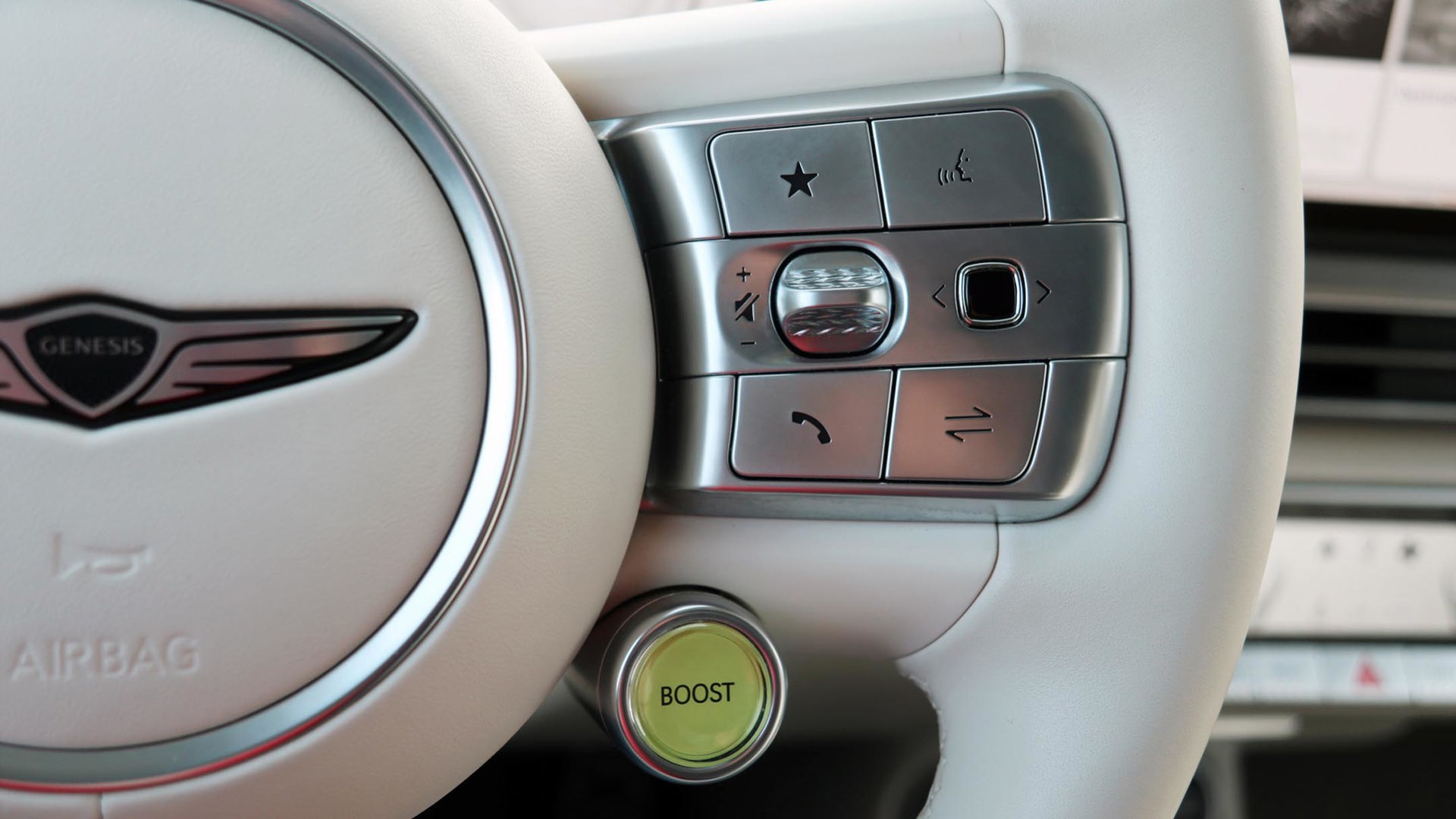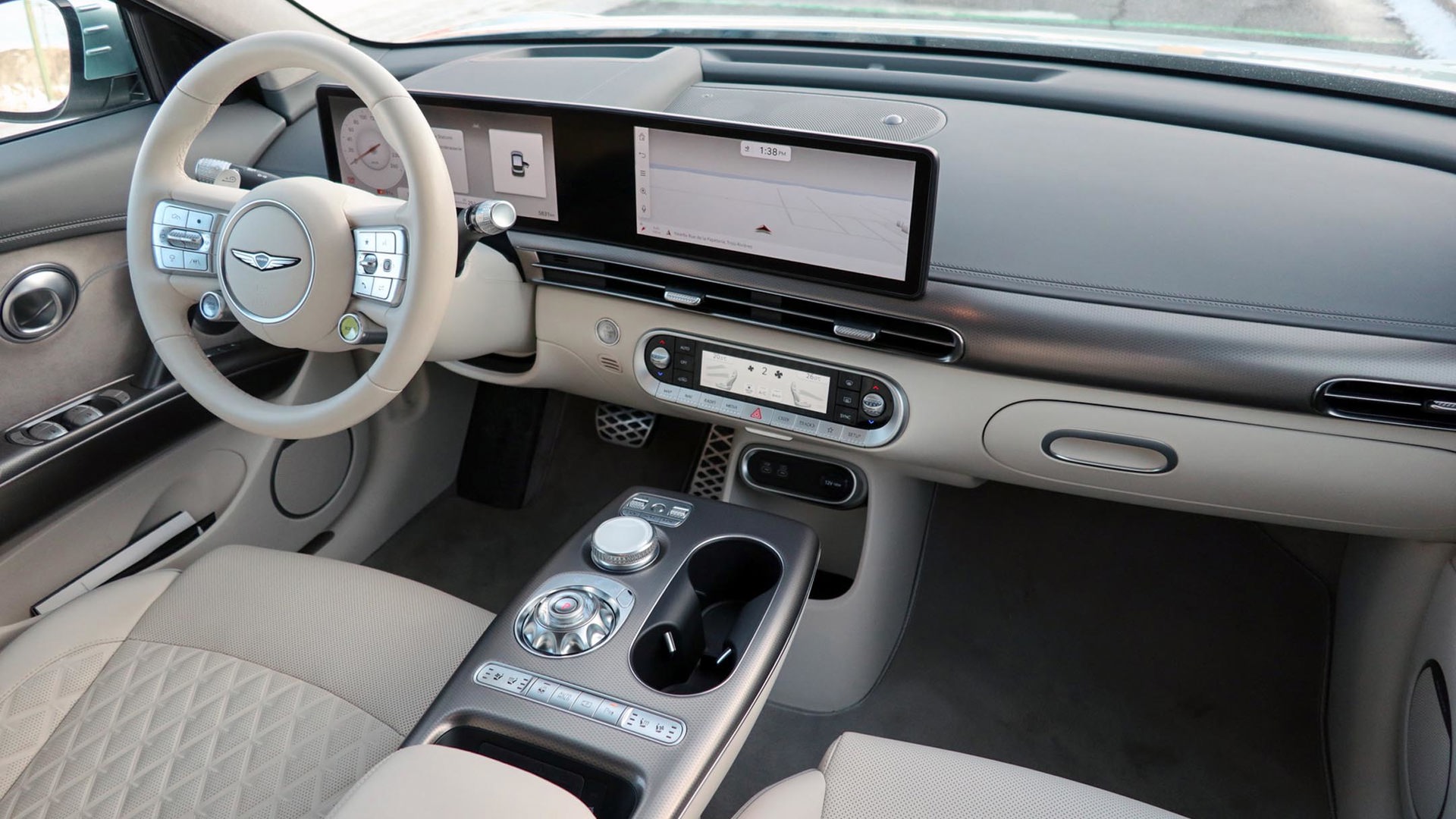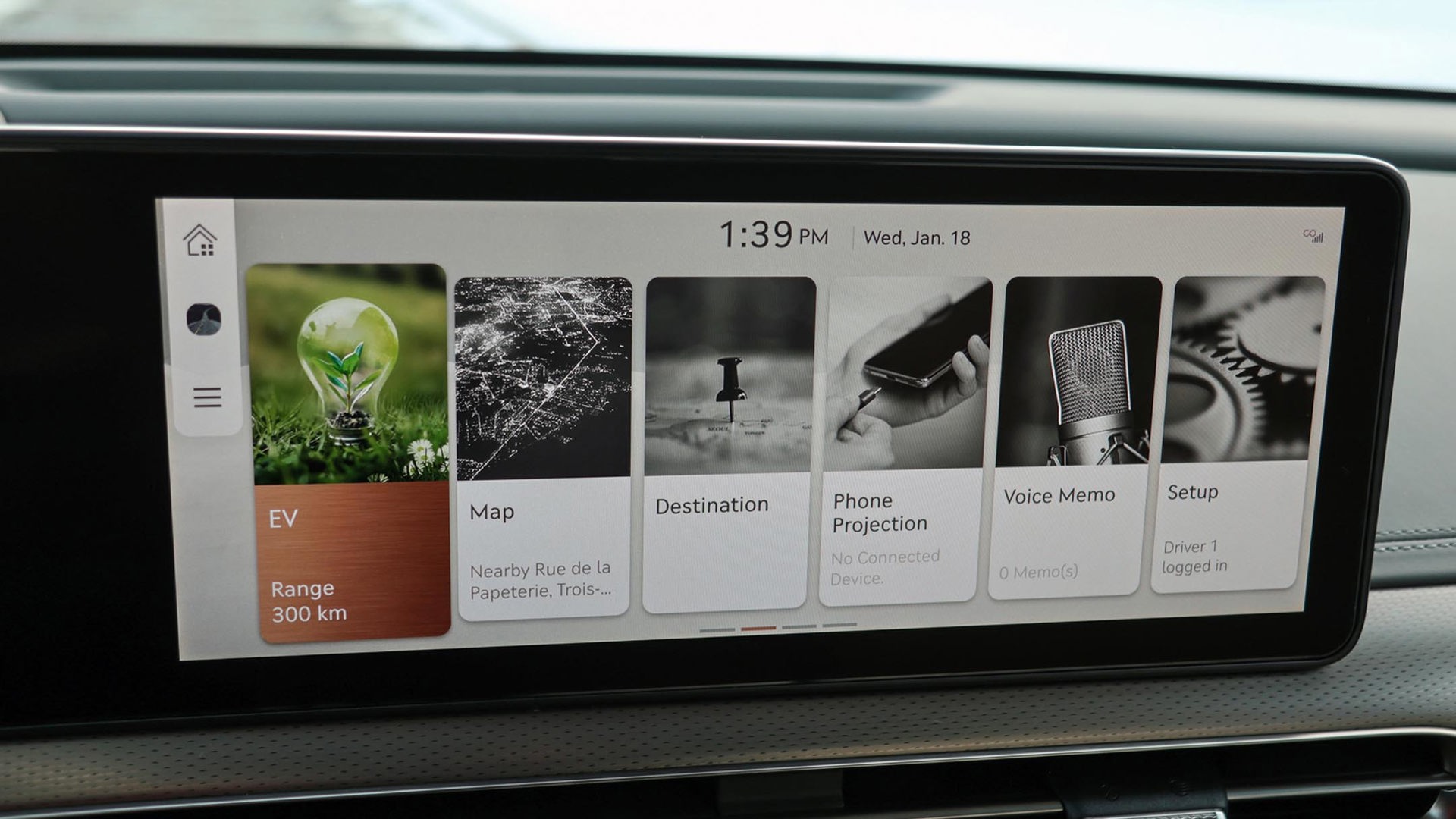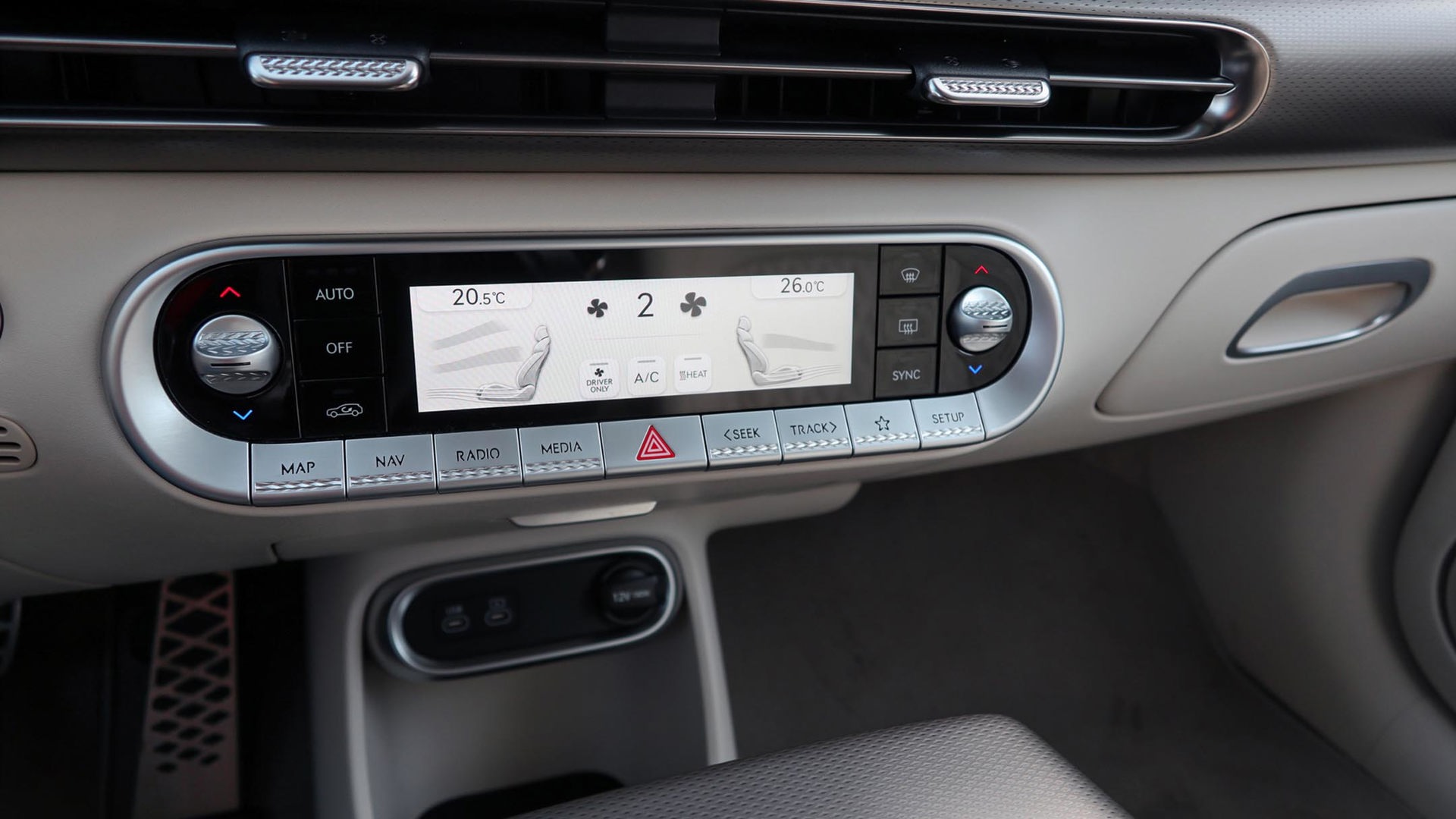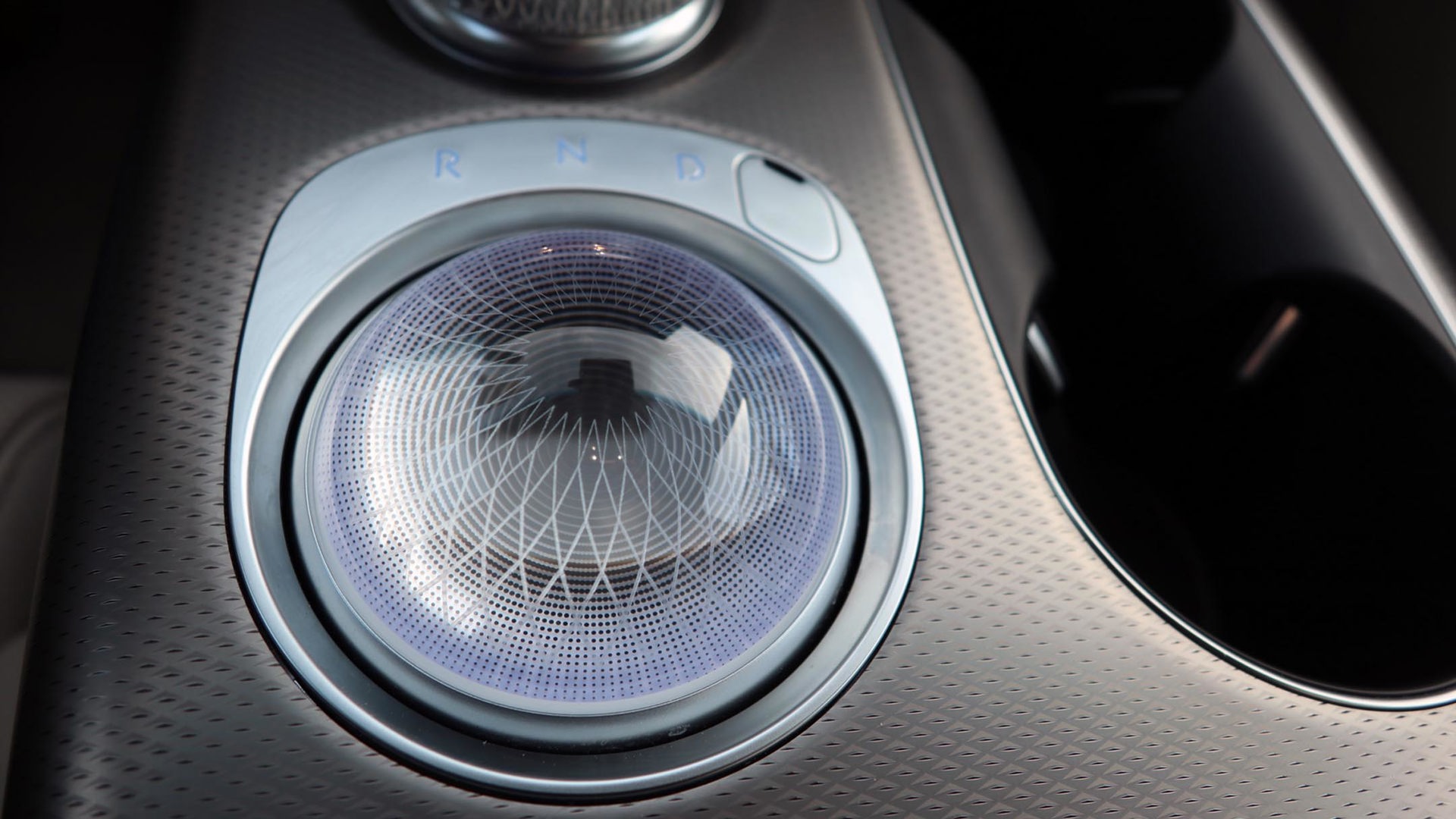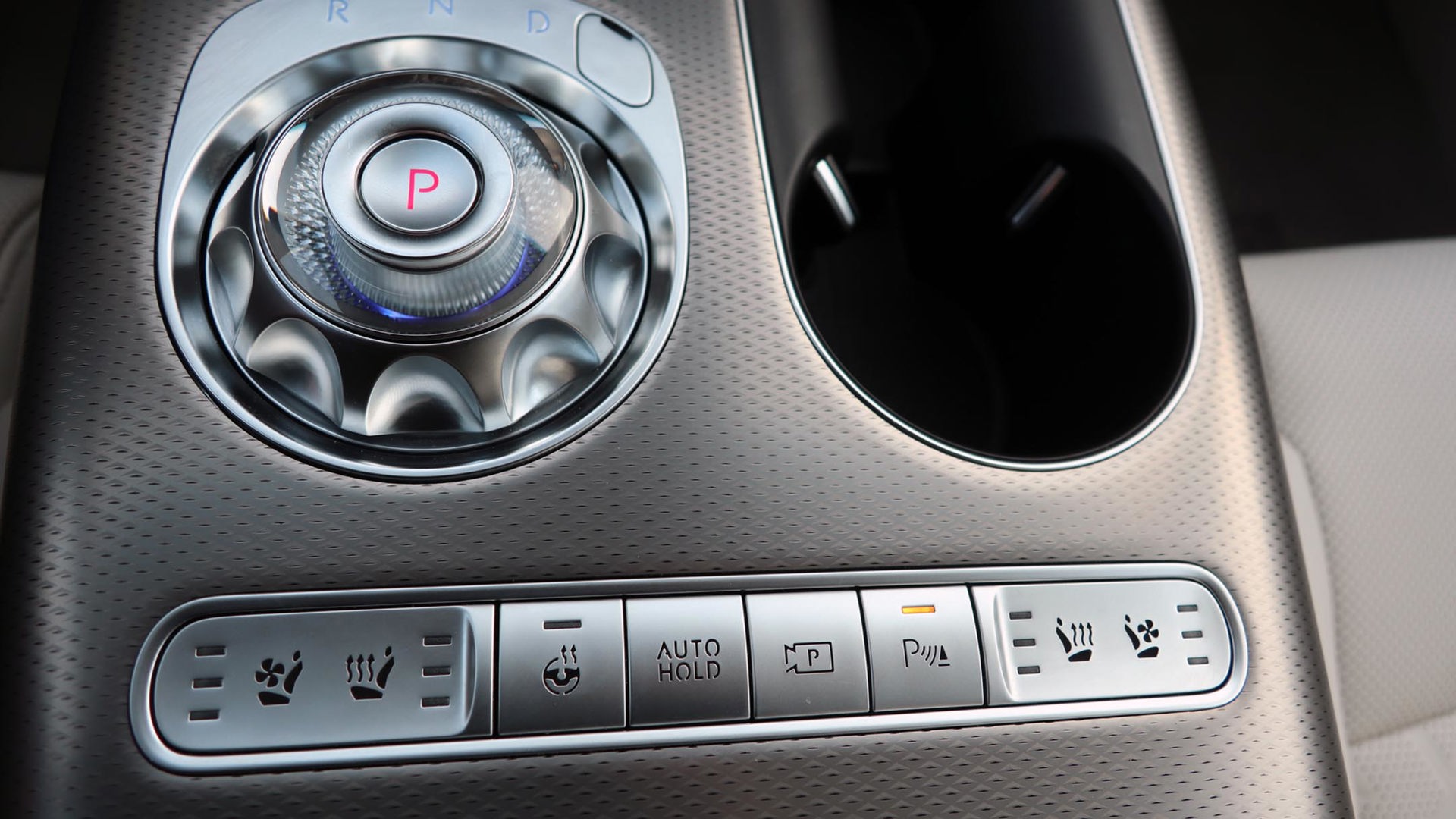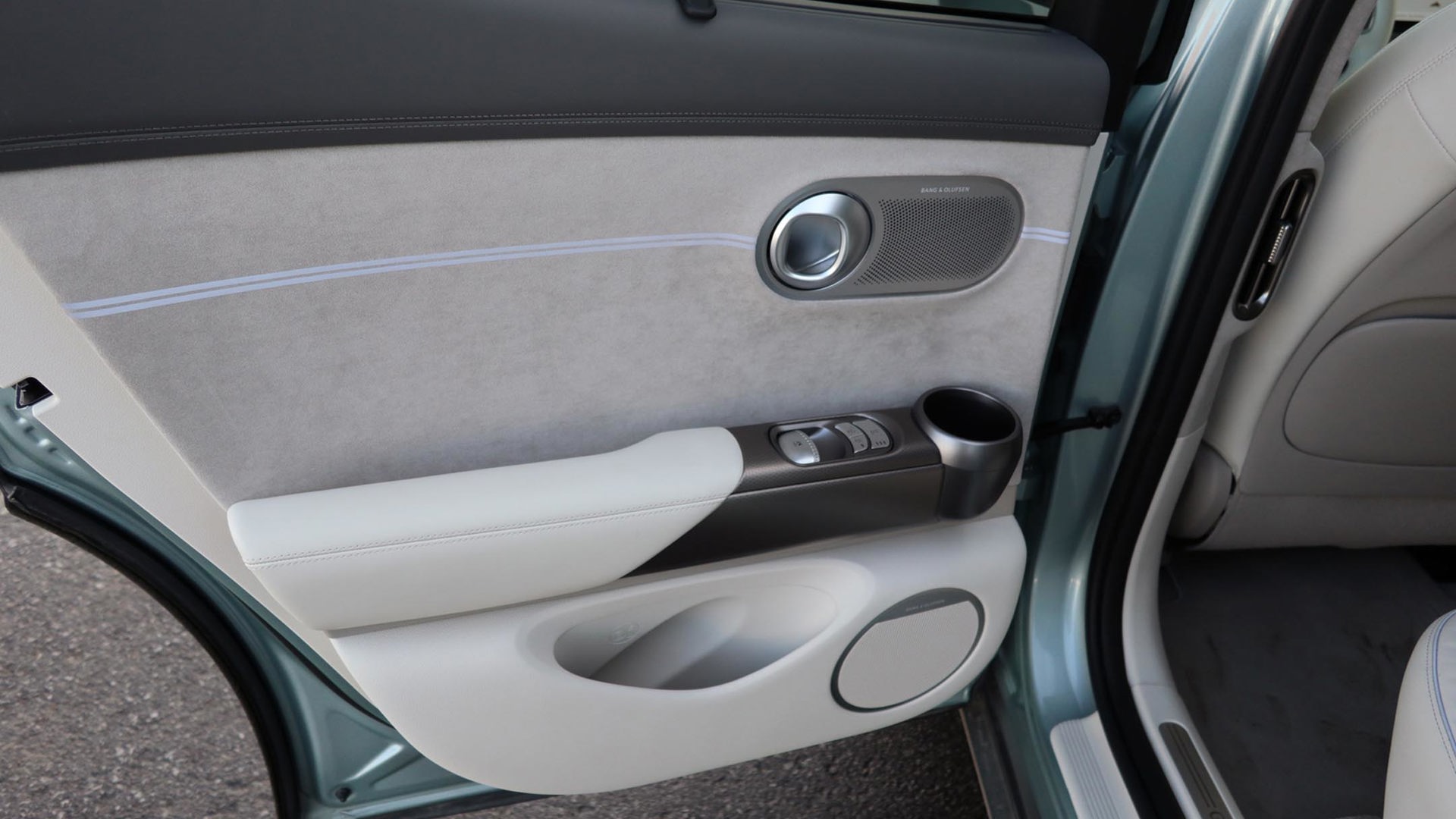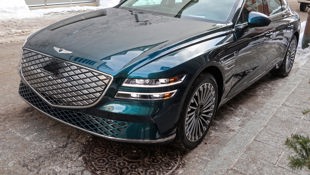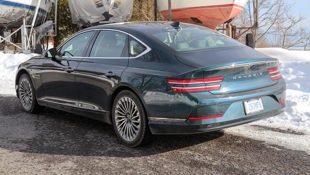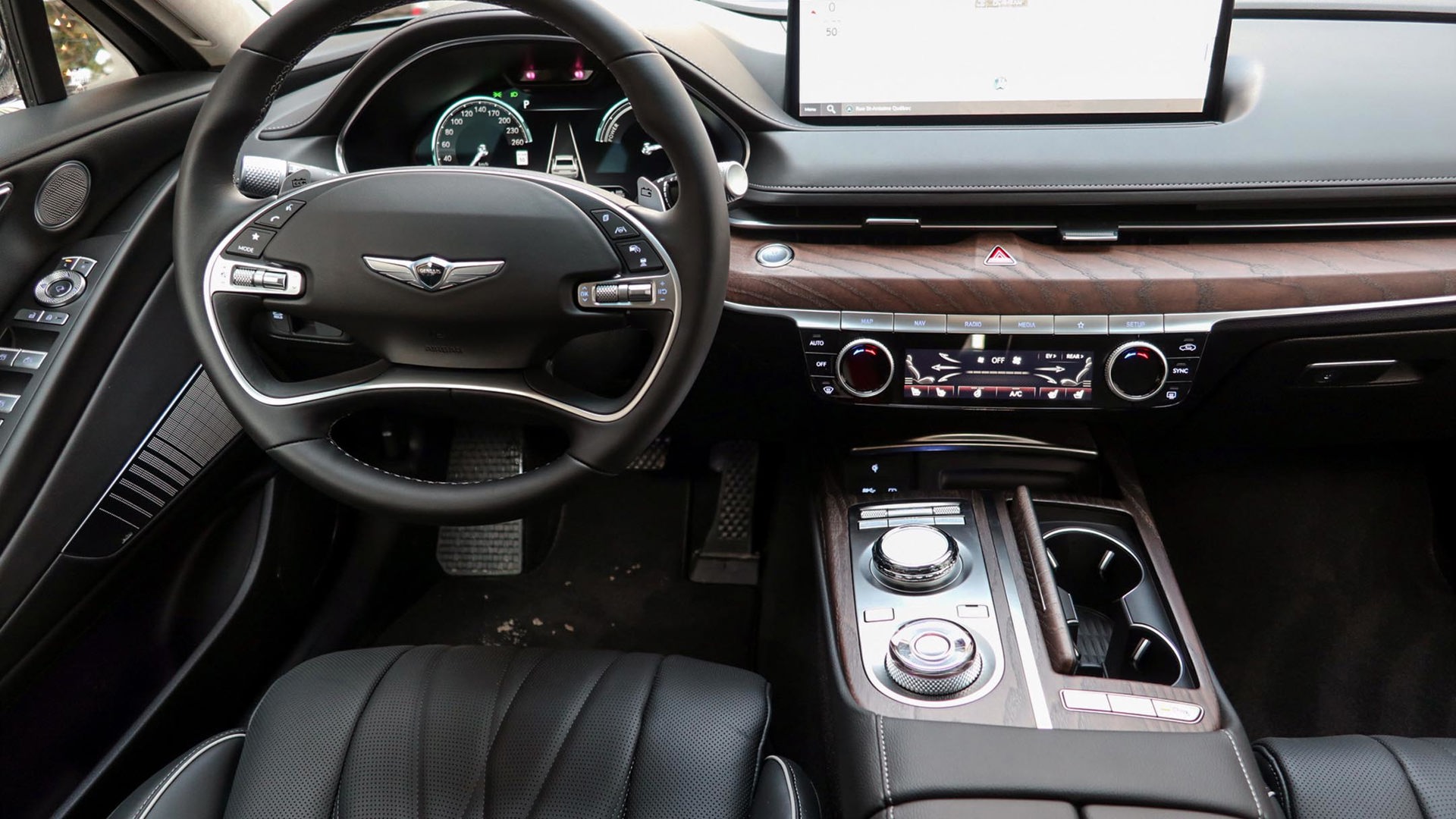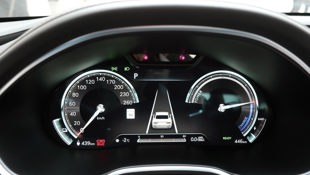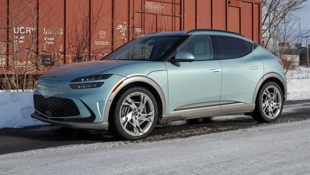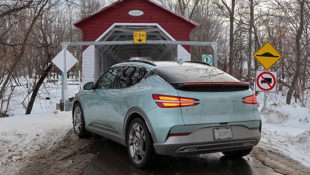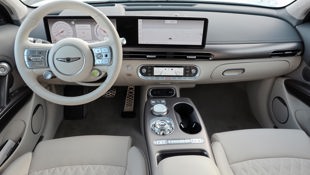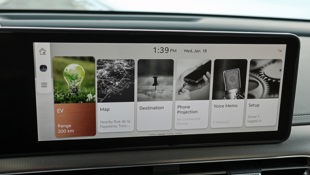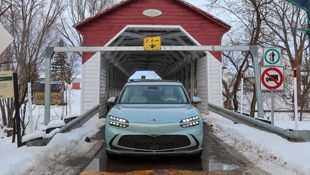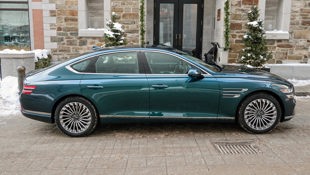Neither rain nor snow nor gloom of night is supposed to stop the proverbial letter carrier, but what about an electric vehicle (EV)? Are they primarily designed for southern California, or have automakers taken the Great White North into consideration? To get a better idea, I drove two Genesis all-electric vehicles from Quebec City to Montreal on a January day.
I left the province’s capital city in an Electrified G80 sedan. In Trois-Rivières, I switched to a GV60 sport-utility and headed to downtown Montreal. While certainly not a scientific test, it provided some insight into a few factors that can affect range.
Range and charging are the major issues for most consumers regarding EVs. Ideally, drivers will charge at home overnight for the daily commute. But for longer trips, drivers will need to stop and plug into a fast charger, and sit with a coffee for 20 to 30 minutes while the car juices up. For those of us used to quickly gassing up in five minutes and grabbing our java to go, this might seem like an inconvenience. An EV has to deliver decent range if it’s going to be a hit with Canadian drivers, including in the winter. Battery technology is getting better, of course. According to the Paris-based International Energy Agency, the average range of an EV was 138 km in 2011, while in 2021, it was up to 349 km.
The 2023 Genesis Electrified G80 I drove was fully charged and showed a range of 436 km. That was less than its official rating of 454 km from Natural Resources Canada (NRCan), but that’s not unusual. I’ve generally found many EVs will show higher than the official number in warm weather, and lower in cold. The G80 has an 87.2-kWh lithium-ion battery. Its front and rear electric motors give it all-wheel drive and a combined 365 horsepower and 516 lb-ft of torque.
The outside temperature was -5°C when I took off. Those who live in minus-double-digit climes will smirk, but I had to work with what Mother Nature gave me. The Electrified G80 is a lovely car, as you’d expect for its $105,000 price, which puts it beyond any provincial or federal EV rebates.
Cabin comfort plays a role in range. That 436-km estimate was with the heater off. As soon as I set the temperature to 23°C with the fan on its lowest setting, the range dropped to 407 km. Each progressively higher fan speed dropped it farther, with an estimated 350-km range on the highest fan setting. Setting the system to automatic climate control gave me 396 km. While it hadn’t been done on the car I was driving, EVs can be “pre-conditioned” when they’re plugged in, to warm or cool the cabin without drawing on the battery, so it’s at your preferred temperature when you get in.
This first half of the drive was mostly rural back roads and highway; naturally, higher speeds eat up the battery range quicker. Driving modes make a difference. With my estimated range at 390 km in Comfort mode, switching to Eco increased it to 401 km, while Sport dropped it to 378 km.
I’d driven 145 km at the midway point, and the G80 showed 247 km of range left. I’d used up more battery than the readout had originally estimated at my departure.
From there, I switched to the GV60 compact SUV. Like the G80, it uses two electric motors for all-wheel drive. It starts in Advanced trim, at $71,000, making 314 horsepower and 446 lb-ft of torque, and with an NRCan-rated range of 399 km. My tester was the Performance trim at $79,000, producing 429 horsepower and 516 lb-ft of torque, and an official range of 378 km. It includes a “boost” button on the steering wheel that increases output to 483 horsepower for 10-second bursts.
Both GV60 trims use a 77.4-kWh battery. While the Electrified G80 is based on the gasoline-powered G80, the GV60 is the first Genesis model built on a dedicated EV platform. This from-scratch approach allows engineers to optimize it for performance and range.
Something that isn’t optimal, if I may be permitted a quick rant, is vehicle entry. I have no idea why many EV automakers are so hooked on quirky door handles, such as flush-mounted ones that pop out when unlocked. If they’re ice-covered, they can potentially suffer damage as they try to open. The GV60’s handles are especially annoying because only one end flips out, like an oversized popsicle stick. When I tried to pull the door open, my gloved hand kept slipping off the end of the handle. It’s a terrible design that needs fixing.
Charged to 91 per cent, the GV60 offered 300 km of range. With an outside temperature of 4°C, setting the cabin to 23°C reduced it to 288 km. Hitting the boost button gives that 10-second power surge, which is supposedly meant for highway passing, but is really just plain fun. Each 10-second boost dropped the range by one kilometre.
Arriving in downtown Montreal, the battery charge was at 50 per cent, with 151 km of estimated range left on it. The initial estimate at my journey’s start was very close to what I got during my 148-km trip. Even with highway driving and the heater on, both vehicles would have made the entire 293-km trip on one charge.
I stuck to speed limits, kept the cabin temperature moderate, been stingy with the GV60’s boost button, and Quebec’s famously bitter-cold weather hadn’t shown up. These are among the factors that you need to consider when you see “your mileage will vary.” An EV will still have to fit your lifestyle and not the other way around if you’re going to be happy with it, but the range performance of these two comfortable Genesis models should likely fit into more than a few.
